ellwethe,--.
UniversityofPennsylvania 71/1 Spring1984
ousecalls aybea rarityinthehuman medicalprofession.but inveterinarymedicine theyareoftenthe practicalexpedient. theromanticizedvisionofthecountryvet, thefieldserviceveterinariansat NewBoltonCentermaketheir dailyroundsinself-contained mobileunits,notunlikethe paramedicunitsthatrespondto humanemergencies.
lleading up the mobile Field Service Unit at '\e\v Bolton is Dr. Richard Bartholomew. aSSii>tcd by Dr. John Fetrnw. Dr. Elaine Hammel. Or. Chrii> Uhlinger and rt!sidcnt!-., Dr. Susan Crane and Dr. Chril>line Rosl> Oi\iding .:alb between them and according to each one'� area of expertise. the'eterinal) team re:-.pondi> to the needs of ailing animals 24 hours a dny. �ln!>l of the1r patients are area farm animals \\ith an emphas1s on horses and canle.
•·t he Field Senice Unit was developed at \ic\\ Bolton in 1952 und until the mitl-1970-.. 1l \\J!> an extension of the large animal ho1>pital. Unller the dtrection of Dr. William Boucher. an ambulatory unit wai> formed. which operated Jutonomously from the ho:-.pital." e.,plained Or Bartholome""· "It wa.'> a relative!) small operal10n, then run by Dr. Boucher with the help 01two interns. We've gro\'n tremendously in the vear<; since rve been here.�

Operating out of a small v.hitc house on cam11us. the rield sef\ ice office il> a bus} place \\lth ringing phones and frequent traffic in and out of lhe door. �ecretary Bell) Branham helps to keep the staff on i>Cheuule.
Two of the biggest routine bealtb problems. accordtng to Dr. Bartholomew. are vaccinations and worming procedures.
"We almost al\\ays treat the animals on site Occasinnall)-. we will refer a cac;e lo the ho;.,pital lor 'urg.ery that can't he performed in the field." ·mid Dr. Burtholome\\. "We each

have regular client'> who call us abl1ut a health problem and we go out to the Iarm or cooperative w diagnose and treat the illness.
''While v.e're at the �ite. we try to educate the client as much as posstble in 1he treatment of his animals, since it is impOSl>ible for Us tO be there to pro\ ide 24-hour care It abo saves the client additional \Cterinarv bills.

"Acute!� ill <lnimab requm: cmerg.enc) treatment. For instance. what can he a simple bell)' ache in a human. can be life-threatening.
c.:olic m a h,,rse. A calcium defic.:ienc\ sometimes relatl!d to difficult calving can cause a

condition called milk fever, which can be rataI lor cov.s. Mastitis i. also a "eriou�;; cond1t1on in cows and other milt..-producing animals. Oiarrhca threatens the li\es ol many newhorns:· he continued.
''We can do almor.t anything in the field that is done in the hospital. but we lad. roundthe-dod. intensive care. We haYe to rely on the client. On the bigger cattle farms there arc u�uaJiy 4ualified people to give medication:-. and admini�ter treatment!>. The individual l'armer is �ometimes a bit squeamish nnout treating his own animals."
NEWSMAGAZINEOFTHESCHOOLOFVETERINARYMEDICINE
cn11rinuedon2 BeUwether 1
BELLWETHER NO.11 SPRING1984

Bclh\cther ispuhluhc'cl quortnfl nl'rlw
.\.clwoltl/ 'ete inan
Mt•dicine at the• Um
\t'T\1/1'ofPenn\rl
,·amo, in <'tmperattcm with the Unn·ersiryo/ Jhmq1\'fmiu Officeof Cunmum catiom.
Editor.�: Or Jolm £ t./artm

Iuui\'Stune
Writt'TS: Ca ol Uauon
1{1•/mu U'eeh /Jr �1. Jusephim• >t-ul>ler
(·fnimul Crat'ken)
Oe\igner:
Simm1 Smith
/1/Uj/TOIOr:
Jud1·Smilll
Photograph�
Amlwn1 Wood
lt•mlcR.Klunder
NewBoltonLiJJison:
Catherme Lamwre
Di(tribution:
JwwJohru
THE FIELD SERVICE UNIT AT NEW BOLTON CENTER continu�dfrom
I
lfl>(Jlikewhear 1'o r prai.'le, rrltid.\111.\, or comments. Plt•a.1e uddre1\lnurcorre.tpondenceto: Dr.JohnUortin.


r:ditor. l111\'t•T.\111VI
PemzsJ/1·ama..Sthoof ofVetermon \fetll·
dne. 3800Sprun• Street, PhiltJtlt•lpllia. PA /9f(J4
urLouise.\tone, Editor.L111\cr.�in·of Penns_,·h·uniu llzthl
tion.!>Ofl/ce,410


l..ogan Hnll. Philadt•lphia. PA JQ/04
\'mwHItltt·�, 01flr!t'' areJu/t;.•rc11twltut'tl in um form ''11lto111 the pertm\\iOfl uj tit,• t•ditCif\ O/ tk-11\HlhCI, 19MCoprrip,ht /11 tht' 7i11\/('t',l q_/ 1he lmnT.\111 of PcmJJ.,/,·mml
While viral and bacterial infectionl> in all farm animals are frequently diagno�cd and treated by the field !.Cf'\icc \eterinarian.... other condlliOn!. \\ arranting treatment range from lamcnc!\s and othc..r foot problems to dcrmatologtcal conditton� .1nd teeth carem hur...cs. primarily. Dr. Uhltnger and Dr. llammcl specialllc in equine mcdac1ne. Uhlmgcr is the dentist on the team anti Dr. Hammel hn'> a -;tron interest in sport-. metiJcine for hor....t.�.
Dr. Fetro\\ o.,pccmlite� in herd heahh and food producuon <.�namab. as well a' the economic con�equencc:-. of disease. 1o fa'-'ihtate the lunction of the field �el\1ce L'nit. he has computt·ritcd the unit\ record-kecping function. thw, making it ea�ier to keeptrackof patient h1�toncsandother health data. Or. h�trO\\ \\Us al-.o re'>pon.ihle lor -.trcamlining man� other bustnC'o.S functtt>Jh dt the Center.
lhe rouune hcallh care of an mtcnsi\e swine raismg facilit� comprising 400 ..ows located on the "lew Bolton Center campus i!\ another respono.,ibllit) of the Field �enicc L.nil
Teaching j.,. an nnponant functwn of the nit. Fourth-year \Ctcrinar) �tudents accompttn) the field st!nice 'it:!flonthe1r muntl-. of local farms and. under the obsenatton of the "cnior veterinaJians, assist m the diagnus1s and treatment of animnl health problem'
··our basic !unction is to serve the �ommunit) and to teach -.wdent-..·· s;ud Dr l:lurtholnmc\\...The:fourth-year ....wuc.:nh -.pc:nll t\\0 wee!,.· '.\lth u... and get practJcallwntls-on e\pcncnce v.ith large animals. fhe tn11111ng is part of�� senior rotation program."
Client education is abo an import.Jnt function uf the Unit. Program' focusing on !>.Uhject� lib.e neonatal diarrhea ha'e recei'ed l!ood response.Accordtn� to Dr. Bartholomew. plans arc undcnva) lor annual client educalton programs on a \artcty of ammal health tnp1cs.
Acccssibilit} to pattents far and \\ide ..., mudc possible through the Lnil\ mobilit). Four of the live licJd'\Cf\ice vehicles arc (UIJ)Cl.jUlpped emergency mobtle unll'> J he tilth j, a "uhurhan van. rhc mohale unih carr) nx)gen. cmergcnc) drugo.,. portable X-ra) eqUipment. and .1rc outlillctl ''tlh 1wo-wa) radio l>)\terns. 1 h�: \cterinanans l.lbo \\Car beeper... o.,o they do not mi-.s an) call' ftom the office.
Themoblleunitscarryoxygen, emergencydrugs,portableXrayequipment,and are outfit· tedwithtwo-wayradio systems.
gui..,hed teaching. \\'hik he di' tdc' tw. lime between the Unit rc�ponsibilttlc:-. and kcture commitment::.. Dr. Bartholomew noted "ith a o.,rnilc thal. a� head of the Unil. h� doesn't pull u.., much night dut\.

011-dut) hour' are -.pent ''ith hi' famil). including ,,jfc Patncia and a -.on. Rtd,,.and <1 duughter. Jane. ut their Chatham. Chester Count) home. Dr. Hartholome\\ '' abu acti\e an Bo) Scouts ol America and enJo)' collecting and rclinishing anttquc-. a!> a hobh).
1he lield -.enH.:t:'etennanan-. ar� a tledicatetl bunch \\ hilc their' j, a ....criou' btNnc�l> or long. hard day-.. a ....cn'e of hurnl•r pre\ail' Prout! of hi� Mganthltion. Dr. Bartholome.. agree' that teumworl.. il> the key tO lhe ridd Service Unll·f. �tH:ces' Carol4. Watson
GIFT OF REAL ESTATE?
Do �ou mu1 l:md that nm\ prm ide' little or no in(ome? If �uu do. till' l nh er,it� uf Penn'�h ania ntn hl'lp �ou 'el up a t•harit· ahie tru-.1 under '' hi(h:
• the land i'> -.old and thl· proceed-. reim e'ted.
• �uu rcreiH' income for the re't of �our life from the pron•ed' of the -.ale of thl' prupt>rt�. and m·ithrr �ou nor the tru..t pa�' capital J!ain.., Ia\.
Dr Bartholomc\\. "ho haib rrom Vermont. 'pecialitc... in hm ine reproduction and herd health. He came tn �ew Bolton 111 196R from Cornell Uni\'cro.,it\' to help de,clop. and !.Ubsequentlv din:ct. the operation-. of the pre�ent F-ield Sen icc l mt. Graduating from Corncllm 1962. Or. l:bnholome\\ st;ncdon to wnr!.. \\llh the uni,cr'll)·s amhula . ton· cltmc. doing postgradmHc -;tud) in cattle.: reproduction.
Al....o a mcmhl'r or tht: teachin� ...taff ut Ne,., Bolton. he ha-. rccchcd the Lindbacl.. .,\\\ard from the l nl\ er,itv ot Penn!>�Jvuma for thstin-
• �uu n·ceh e an income ta' deduction.
• �uu a\oid t•,tale Ia\ on the propl•rt�.

• thl' �du10l uf \'l'lerinar� \h·dicim· ultirnatt'l� hem•fit, from till' tru't.
Fur inform:tlion. t·ontacl Timoth� \. 'ichull...htt.. Pl:.umed (;h ing Offin·. l ni\l'r'>il� of Penn'�lnmia.J.&�I \\alnut Strt•et. Philaddphia. P-\ llJIII"'. lt.·l<·phtllll' (2I�)l'IIJM·lll71.
CentennialCelebration!
1 1 ;:h�· .' I . I ,.• #'t,J, 2 BdlaDether
"Wealmostalwaystreatthe animalsonsite.OccasiooaUy wewiDreferacasetothehospitalforsurgerythatcan'tbe performedinthefield."
PotomacFever-Ahealththreattohorses
team ofmedical dclectwcs has hcen as-.cmblcd to fmd thecause of Potomac Fever.auisea:>eofhol"\e� fin.t dcscrihcd a�a ne\\ entity in 1979 in \tontl!omcn Count\. Manland. ""ll,at summer . pr.!Ctttion�rs OOtiCCd a <..uddcn in<:rc:lse m the number ol hor"c� wnh acute.olten fataldiarrhea."explained Dr Raben II. WhitInd•.profes!.Orofmedtcinc,.u the l nhcr.-tty of Penns\1vama · :.-. S�hool ofVetcrimm Medictne. !\c"' BoltunCenter ..Thedi<..order wa c•llled Acme fquine Dwrrhea S)ndrome(1\EDS).hut tl'> commonnamequicl-lybeC'c1tne Potomac Fever alter the region ''here mo-.tc:,hes had been found.··
Sinl:c the c.Ji,easc ''•ts firstdescnht..'<l 11heb at-,obL-en reponed in other pan�of the country. though the incidence appears to behighest in the PntomacRiver\alle\'(\1ontgomenCount})."It illprobably a disease whtchha'>been\\-lth u� for c;omellrnt:.-Dr. Whitloci- stated ..1he unusuall} high numbers in Maryland alened the profc:;�ton that we weredculing ''ith a srx-cilichl:retofore unrccognitedd1'ease entit) and not one of the knm\nequinediarrhend1sea�c1>."
The;-numlx:r of Potomac Fe\erl'ase,has steadilv n:;ensmce 1979In19X3 Mnrvland, VJrginin and Pennsylvaniareponed 173 afflicted hor;esol\\h1ch 56died or\\l:rceuthaniLed for human�:rcJson�. The animal' affected were hor;esandponic:- kept at farms and riding stable-.. Becau!>e Pmomac Fever '' o;ea.sona.l.a numberol horse owner;have movell their stables nutofthecounty during theo;ummcr month-.. nlcdisease appearsertch year InJune. peak..in Jul\ and Augu'tandcontinue...throughOctober. to\anish until thefoiiO\\ingwm.

The'ymptoms and mantlestatinns of Potomal· h•,er\<ll). Inmo:;tcasesthe antrtldl 'ho\\sa loss of<1ppetitc. :;cern-.dull and dep�c;cd.thena lever is often recorded and folltmedh\ <tcutcdiarrhea '\ot all hor'>e.'de\e!Op di other; ma) be tran'llentl) "ufl feed," dcpi'\.'S.'\C..--d.febnlc\\ithonl) mlld diarrhea. nmsa \�l.trum of chnJL411Stgm, (SC\Cnl})O<.CUr.. In hor�alft:cted with Potomac l-ever. About 20 pcn.:etHol the.mirnal..de\elnplaminitl'.andit'' tht'>complicauonwhich cause!> man} of the hur;c'w hecuthanitcd lor humane reasons. \hnut60percent of the horse-,with the da rccm·erlullv. 1-lt)\\ever. treatment can he cxpcn,j\'tbec-Juc,� the.mtmt\1mustrcrei\t:lluid\, hoth or�llyandintru\'cnousl� analgesics, <lntihiotic..' andaddit1onal �pecialc�re art: required if larniniu,de\elops.
RN archers from �ew BoltonCenter the M.ll)land Department of AgriLuhure. the Virguua-Maf)landRcg1onalCollege of Vctcnn:tl) Mcd�eme. Hlackshurg.\1rginia. and the Nnttonal 1\nunal D1�a-.c Lahntalol). -\mcs. lnwa.I0111CU force-.and launchcd a'lllld� during the..uinmcr ,)119�3 togather moredata on Potomal:fevet.One hundred-twentv-cight hon.e�

wcr.:studted and ep•demaolog1c data on 74 were collected In addition clmicaldata \\erea'scmblcd for XI animal.,and lahoratol)data along\\.ith comalesccnldata on man� hors�. Ihecpidcrmologtc mformationwa�gather�d b) meansof a28p.tgcquestionnairedc\'cloped by Jonathan E. Palmer.\' M.D from Penn\Veterinar') School and tn Unan Pl!rn·. M.R.C\.S.• trom the Vitginia-Mal)lam(RegionalCollege of Vct�.:rinal) Med1cine. Owner; oflhc 12!\ hor<;es were a!oiktxl to compl�te thetlncum�nt whichmduded question'itbout thehorse\medical hio;rorv its en\lronmcnt. th u'e'and mo,�ments awa� Irom the farm. Quesliom were al!.o.ts!..ed ttbout the thcrap� employed toc.:ombat the dil>case.the laboratol) findutgsand the necrop�y results. fhe data arebetng anal)'lcd by computer al New BoltonCenter and alsont Vtrginia Pol�techmclnstttute to deterrnmc relativerio.,klactor:.as\\ellas char.tctCtllation of thedinic:.tl and laboratury hallmarko.,.
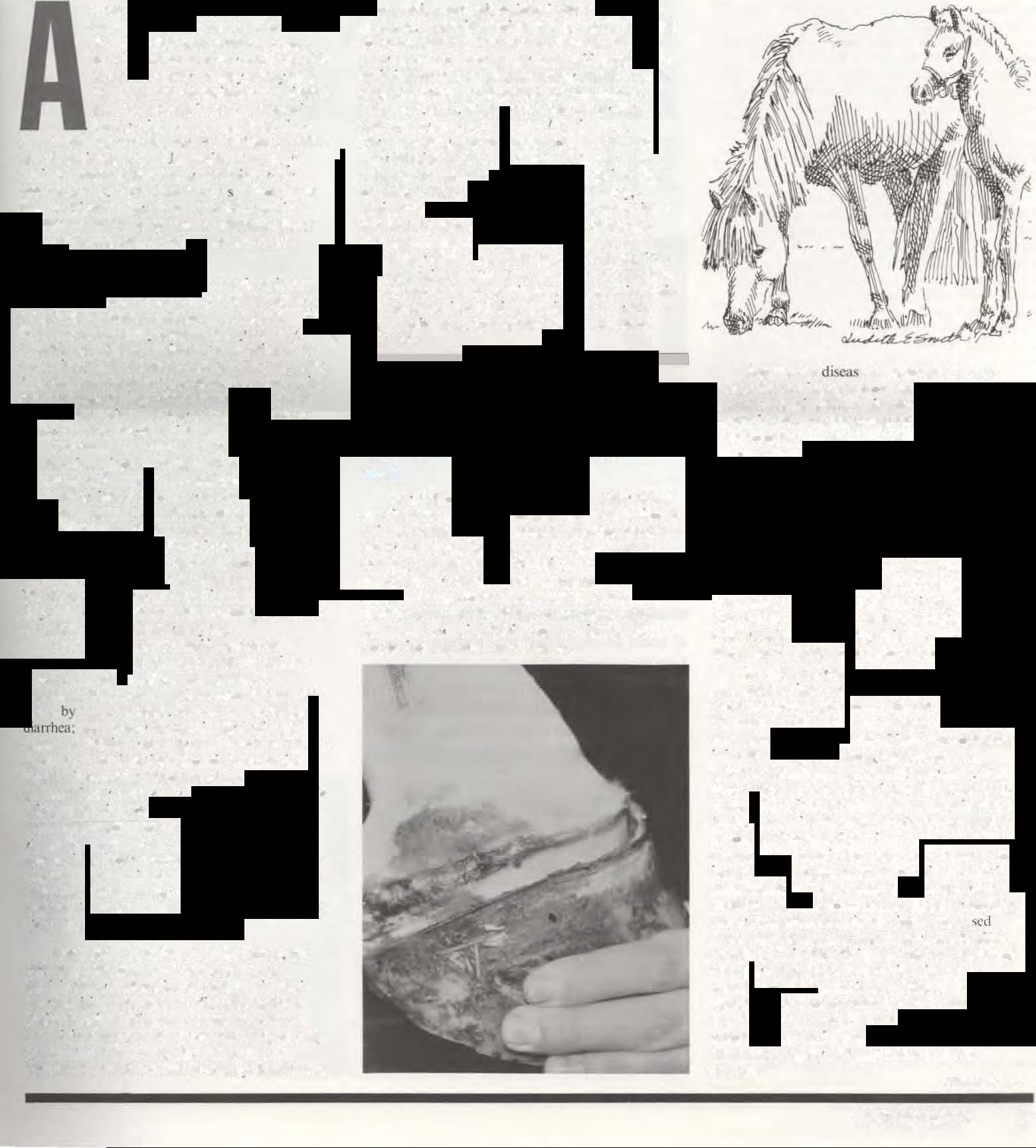
In.tddition tothe quesllonnain:.dail) blood and tecal sample� were colleL"ted from the aflectcJ ammal-..These wereexaminedandculturedat the Mar}land State Depmtment of Agricuhure laboratory.at Blacl-sburg. Virginta. and at New BoltonCenter "here blood chemistry -.tudi� \\ere done. Attempt� to isolate a \'trus that can reproduce the di,easc have failed sofar.Organisms common!\' a '\OCtated \\llhequinedtarrhea could not be lsl;latedfrom the samples.

Because the di..,ea...e is seasonal. it is suspected that an msect vector rna) beresponsible for the transmission Dunng the...ummcr of 198.3 m�cts tn the area weretrappedand analv.ed b) entomologasts. It wasfound thatthe number and �pecieo; were not unusual. Insect �tudies \\ill continue tht��ummer. The vegetation was abo examined for poisonous toxic plants� again. no unusual plants werefound. lt appear.that the fif'\tcaseseach}'earoccur on fam1sclose to lhe PotomacRiver. A�summer progrcs...es. more areseen in areas �orne di'tancefrom the river. Usually only one01 two ho� ona farmarc affected bul .1 few farms have had Se'-'t:r-..tl hon.es affected 10 the 1>ameseason. 1t does notappear to be a problemof foals and \\eanlings.rather the ammals which contract Potomac Fever are l\\'oyears and older.
In...wdi�at \lew BoltonCenter it ,,.as anemptedto mfect horses through contact with lccal material from hor...e� ''ith Potomac Fever Researcher- found thut the disease could notbe tmnsmitted in that manner. Jhey also found that It '" not contag1ous through direct contact bet\\een diseased hol"'.cs andhealth� on� ll1c only wa) a horo.;c could be mlectcd was through tr-.msfu'>ionol blood froma diseased ammal to a healthy one. ·yhe New Bolton Centerresearcher' produced Potomac rc\'ertna number ofho�� dndponies \\ith th1stechnique in anattempt tu •�alate an agent and to study the dtseascand ttc; manife...tation.... Inc) found that ho�''hich reco\ered did not contract thedisca...e""hen they rcL-ei,cd another tmnslusion lrom adisca..cd horse. "Itappears thata protL>eti\cmechamsm develops."satd Dr. Whulock...But we could not lind am unu..uallevcls of<�nttbodles.-Tl1e researchers also found at \\a!> diflicult and mar�. 'ariablc toinduce the diseaseifthey usedfro1en blood.Thisha'>made the reo;earch moret:O�tl}as ahors� has to be mfc�o:tt:d every two wecl..s to mamt.am a suppl} of bloodfrom dic;eascd animaJs.
CentennialCelebration!
Theonlywayahorsecouldbe Uifectedwasthrough trans}Usionofbloodfroma diseasedanimaltoahealthy one.
continuedon.J Spring1984 3
POTOMAC fEVER ('tmfirwnljmmJ
The1\C\\ Bolton 1camj, in\cstigating hlood samples from horseswith Potomac Fe\er inan effort to idcntif� theagent. It is hoped thatonce the agent is found. a diagnosuc testcan bedeYelopcd and perhaps a \accmc. Ihe'tud) has been ,.el) cxpcn..-.ive. ll c�)Stsmer$700 a monthto folIo" a pony and do thencce't.al) test!.JU�tto be surethat the animal is,,d.. from Potomac l-e\er. fherc are additu.lnal costs incurred forvirology studies, microbiological techniques. electronmtcroscopy. special'tnins and otherwor" needed in an efrort to recover the new pathogen.
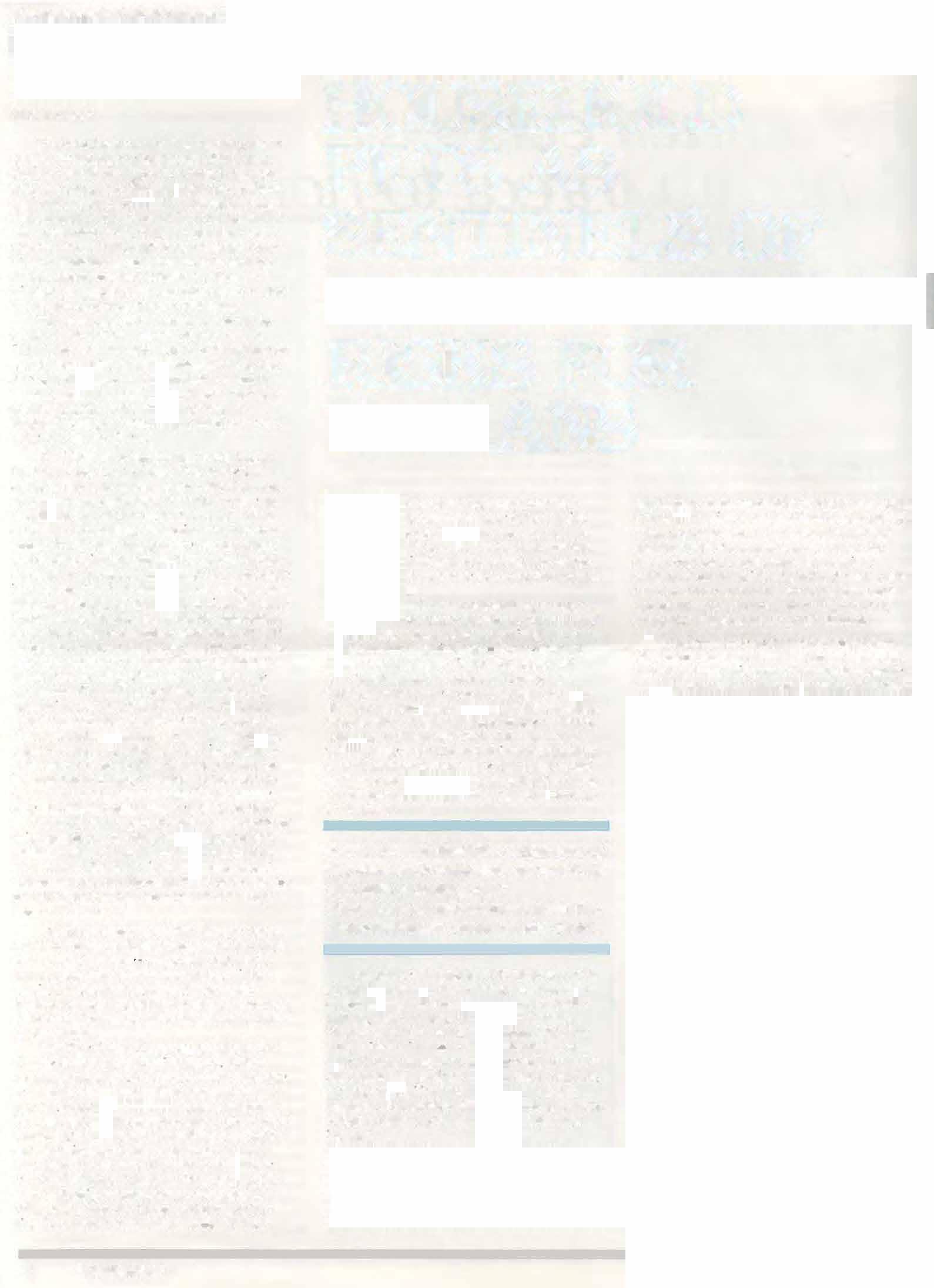
The studies so far ha\e bt.-en supported b� pri\'aterund'and recently theMomsAnimal roundationhas awarded a grant to theScho()l to tletem1ine hO\\ thec.Ji,casc��transmiued. to lind theagentcau...ing it. and to dctcnnin� whether anunal' de\clop unmunit� fhe foundationalso awarded a gmnt to the MaT)l.tnd-\'irginia
RegionalCollege of \elcnnaf) MeJicinefor the \tUd� of Potomac h:'cr.

Dr Wh1tlock ts hopeful thatu solution to Potomac f-e-vercan be found -weli.nO\\ that hor-e� \\htch ha'e rcco,ered from thediseebc do not get tt\\henchallenge<.!.� he"aid....It ma) be possihle to get a o;erum fmm tht'!'e animals and U!>e th1s a' a t�mputaryprotcctton for threatened hor-.e!-.. It will tul..c money to dc,clop the !>erum and to dctcm1tnc the protocol. al> we don't know the cau�c of thedi'iCihC, tim couldbea goodinterun mensure." He feel\ that horse owners can take some 'tcpsw protect thcu ammab IromPotomac Fever ..As wefeel thatit 1!-. probahl> tran'>tnitted h\ an insect insct·t contrnl is\ital. Burn!. should hC l.cpt a' freefrom tnsccts as po.,sible and insect repellent �hould be u�cd on hor-.c' to minimile the chances of hcinl! hitt�n.� He continued b\ ..tating that if an animal contmcts the dise(ll.e '>uppnrll\C care and tluidthcr.tp} are\ttaland should beinstituted at once h) the ,·etennarian. He felt then...t... '' mtnimaI forhor..c owners\\ho might beattenc.Jmg sportingC\Cnls m the�tal)laml areaasPotomac h:\crdue�not appear to he tmn�mittcd through contact. "'llorses can be tal.en to hor-.e sho�s."he"-3itl. -t'hat\Ul>Uall> onI) oneda\. .Additionally.0\cr90 percent of thehor,cl>....tudied arelocul hof'es. Some e\1dence cx1sts to mdicalcthedi�t!a'it: ,... \\tdc!.prcad und 'imilarl) affected hor..l:.' have bt-cn reported in i\cw.Jc....,cy. Oklahmna. lcxa-.. Wl\con'tn and Colorctdo. Ihu" the Potomac 1-c\cr agent may be presentthroughout the countr) but not recogniJed tor\\hat it is.
The rc�carchcr!> hereat1\cw BoltonCenter and at thc other institution� hope to haw a solution to the Potomac l·c\crprohtcm before the -.ummcr, hut a lot ofwor" and money ,.,..11 be requtred to t!>olatc the. so Jar. clu�ivc agent. f-urther studi�,...., atc planned lor the �ummer man effort tofind thecau-.c and a method ofprc\enting the dtseasc
fhc i\c\\ BohonCenterli!itm includes Dr. Charle..' [ Ben-.on. microbtology: Dr Helen 1\dand.pathnlog)� Dr. PeterC. \1ann. necrop� C\aluation: Dr Jonathan [. Palmer. eptdemiology. Dr Rob<!rt II Whitltd ga�trocmerology: Or. t-ernhthhn. clcctronmicw!>copy: Or. Jorge F-. Ferrer, and Or RtchardA. Mcft-clytn anad,i'01') capactty. anc.J further supported h� live laboratory technicians. Ihe team isa.-.�i�ted b} Dr.Gemld Worx.lc. College ofVcterimtr) l\1edicinc. llnivero;tty of Iowa. Amt.'S, Iowa. and Dr. AllenJenny from the NationalVeterinarySer\ICCS Laboraton. 1\mc,, Iowa. Helma Weeks
HOUSEHOLD PETSAS SENTINELSOF E ONMENTAL RISKSFOR ANS
og,. in 1hcirInn!! as-.ocLationwith man. ha\chacJ man) role�. rangmg: linm aS\t:o.Lmg the hunter to being a family pet. h '' 10 theIauerrnle that c<�nmcs may play a'itaI pan in pro\llling anc-arl� due to cn\cironmental risk...

A rc:ccnt cpidemtologtc study at theSchool orVeterinary l'vlcdicine. L'ni,ersit) of Pennsyhnni.t. cx.u1�incu rccorcJ�; of ciglucen dog� \\.htchhad been,tdmttted to\ HUP \\lthm�:..,othelioma. aru11: tumorfound tn human'"ho ha\eheen c\po..,cd to a'bl"'tos."Dog-.'hare man\CO\imnment. \ct du nutinduleetnacti\itt� sucha' smokmg.or \\orl.tng"hl�h conlound interpretationul epidcmtolugic stucJie..."..aid Dr. L<mn:nccT. Glickman.c:hid of the.,c,tton of epitlemtolog� atthe �chool. "Gt\1!11 the relathel} short lik�pan of thc�c animal,, the lah!nt period fnrtumor dc,dnpmcnt '' dc�;.rea�cd and accurate information rc�attlmg en'ironmcntal h1 tory can he obtamed.-

Itwasfoundthattheexposureof theownertoasbestosatworkor throughahobbywas sign!ficantlyassociatedwiththe mesotheliomacasesinthedogs.
;\�h•Nn....•' mineral lihcr. i'-. <.�II uround. lt is found m tn,ulatton. hmke linin£.-.. con,trucuon material. fitcprnol clothtng, and 1�u.,cd in!\htp hlllkhng. rhe'>Uhstanccj, tntncd inCanada. \\esternAu�trJiia. and�outh \Inca Theiiher composition ol a...bc.,to� dtlfcr�. depending on ''here itwa' mined. fhcpnmaf'\ productusecJ in thlS�.·t1unt com�-..IromCanada•Hldj.,Cf\\otilc. a'traight hct. lhe product from \frica�nd \ustralia "crocidolitl' \\luch''a-.crpcntineiibcr. Asbe'w" lihcr-; arc minute. easil� inhaled and mgestcd.
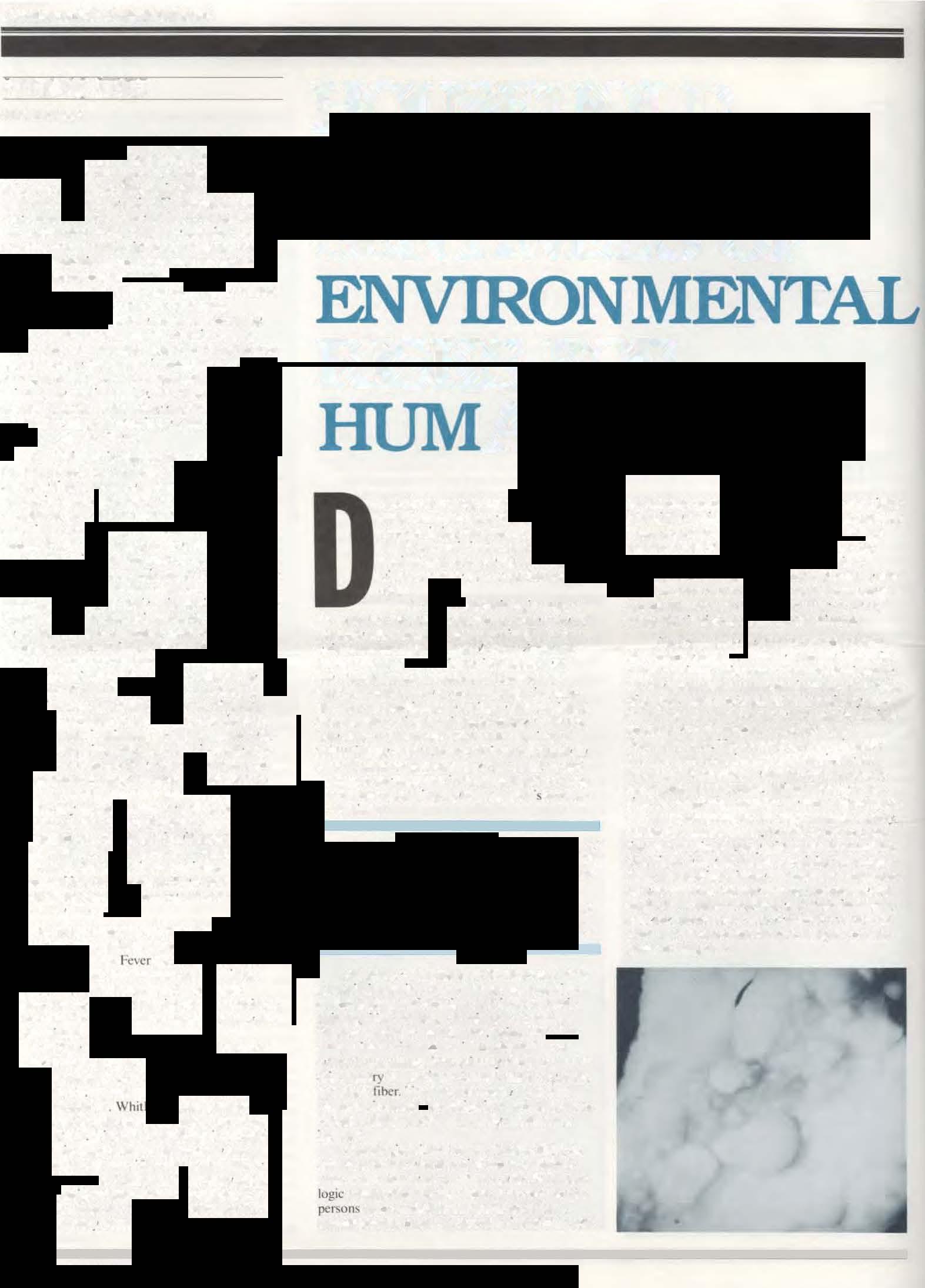
Pathologt.,ts l<'unc.l ttaccs or theselibel'\ in human patient\ \\ho hnc.l uted from mesothelioma. a rurc tumm ut th1.·�:hc\temity. Epidemiologic�>tudics sho"c:d that mo\t ca�e' occurred in pe11.on' who \\nrkcd in...hipyurds ora..bc!>tOs manufacturing plnnt\. It was aJ.;o found that peo-
piccxpn,cdw the�rocidolit�.·fiber.treata htghcr ri'"- of de\clopmg the lllmnr than people expo<oed to the cr)'\Otiletiber. Inanimal experiments it appeared tha1 tht: danger rate\\3� about the same. Expo�ure to asbestos can result sn a number of other debtlitating andpulmonary disea!>e� In most cases asbestos-related symptoms and diseasearc not seen until twent) or thirty years after mittalcxpo-.urc to the mmeral. rhePenn \tlld) c\aluatcd records oldl)gs diagnosed \\ithme,othcltom,t hcc�tu�cll was felt that pet a111mal" mtght he a rc..ource fortdcmif)ing emironm�:ntal human carcmogen... The group of dogscon..istcd of cightc..'Cn hi,tolngtc-cllh coofim1ed m�othcltoma(a-,c.,\\hichhad lx>-en dtagno,c..>d at\IIUP hct\\c..'�n1\pril 1977 and December 1% I I"o control group' of cancer and non�<tncc:r patients at the ho,p1tal \\ere ,eJe�.:t�d<:tnd m<Hchcd b� hn:c..>d. ag�. andc,e-.; to them��othcliomugroup lnlormatiun \\a�-.olitttedb� telephone fromtlw O\\ncr!) of the dogs in the threegroupsaboutthe dog\ medical histof\. �idenc.:�. managl•ment a' \\Cll a� theoccupatton and medtt-alhi.,tof\ ol hou-.choldmember... Que�llnn' "en:.tl\0O.t'>kt:d rcrtammgIO occupations and mcdtcal llNOr) of household mcmne...... �"\\ell as ahllttl lwhhlcs andocc.:upation" \\hich 111ight have exposed owner' .tnd their families to a'bc--too,. Rcsidenc.:c' w�:.t� c..·l.t:-.,ilicd "" urban01 ruml and unal\1cd forthelir-;t. longt:-.t. or residcnc::c ordiagl1l''is.

CentennialCelebration/
4 Bellwether
(
Itwas found that the exposure ol the owner It�a!)�sh.>s at work or through a hohby \\a$ stgnilicantlva�sociated ''ith the mesotheliomacases tn the dogs. It was also found that ammal:-. li"ing inan urban environment were at a higher risk than those lhing in a rural one: thi was most C\ident fot thefirst residence. The researcherS were ahle to positively idemify the sources of asbestos in 75 percent of the dogs. They found that these included a household member with an asbestos-related occupation or hobhy for nine

dogs, home remodelling or addition of home insulation for five dogs. and the use of nea powder or sprays for five dogs. Quite a number of the owners worked in auto repairshops. a number worked in construction involving work with gypsum wall board and spackling. Some owners had done extensive home remodelling and others lived ncar demolition and construction sites. One dog accompanied the owner to work which was adjacent to a shipyard. Three of the dogs had no exposure to asbesto�. but they had been treated regularly with flea powder or sprays. Tbe mean age of the animals with mesothelioma was eight years� this corresponds to middle age in humans, when most asbestos-related diseases are first dtagnosed. Theasbestos fiber level in the lungs of lhc affected dogs was similar to the level reported in humans \\ith mesothelioma who had had occupational exposure to asbe'>tos.
ll1e flea powders and sprays ma) represent a yet unidentified health hazard. Tw�lve products were examined and amounts of quartL. silicates. silica. and small amounTh of antigonite, a fiber clo lv related to asbestos. were found. Dr. Glick�an explained that while asbestos fibers were not specifically identified, exposure of humans to other mineral fibers hru. been associated \•lith pulmonary disease. This should be studied further as flea powders are widely used
He feels that household pets provide an early indicator of asbestos dangers in the owner's environment. ..Because of the short latent period fortumor development inthedogs. the mesothelioma would often preceed human disease by many years. Humans frequently develop such tumors twenty to thirty years after exposure to asbestos and household pets could serve as a useful sentinel for human exposure to the mineral."
Once a pet has been diagnosed as having the tumor . the veterinarian should alert the owner. who then should be screened for early signs of �bestos-related disease Such early warning would give people an opportunity to reduce exposure to the mineral and to change habits, e.g., stop smoking. h has been found that smokers "'ho have been exposed to asbestos have a ten times higher rate of lung cancer than nonsmoke� who have been exposed to asbetos.
The studv also found that more male dog� than female dogs had the tumor. It i� not known Wh)- thi� is so. In humans this pattern is as�odated with occupational exposure to ashestos.
Dr. Glickman stated that "'pet antmals with spontaneous tumors provide a valuable resource for eptdemiolog1c studJes of environmental and dietary risk factors for cancer. Prov1ded that only histologically verified tumors are included and accepted epidemiologic techniques are used, pet animals rna) provide insight imo the the role ol environmental and dietary factors in human cancers.,. It appears that even in illness the dog never ceases to sene its family.
The collaborators in the study were: LawrenceT. Glickman. V.M.D., Dr.P.H.• I mda M. Domanski. M.H.S., loot G. Maguire, B.A., Richard R. DubieiYig, D.V.M. and Andrew Churg, M.D.Helma Weeks







/
I ' CentennialCelebration!
Giventherelativelyslwrt lifespanoftheseanimals,the latent fortumr developmentisdecreasedand accurateinformationregarding environmentalhistorycanbe obtained.
Theasbestos levelinthe lungsoftheqlfecteddogswas similartothelevelreportedin humanswithmesotheliomawho hadhadoccupationalexposure toasbestos.
Spring1984 5
FOURTEENTH
ANNUAL SYMPOSIUM
,\ <."apiiC'rt� <:rmHitll200aucntlcdthe founcC"nth \nnual S\mpo-.mm."Yuur\'eLennanan and Your Dop.�heldat the \'ctcnn;tr) Hc�rnulolth.: llnhc"'ll)o ofl•c:nn.,)hana:t \1t' Ct�o�rlc-.,\.l. O�ctll.chaii'TJ4m,,fthe l.adic-. Committee wclcmru:d the pamcrranhand announo:d th.lt the tlC'>.I ,,mro�nrm ''ill herre-.cntedonJanu;tr)o 26,19X'\
A�hort'ynorw•ofthep ntatio hllltl\\�·
J)I!-.E ,fSI!'S01·Ul£JOIVT. Al,lflJ. I rpnwitt,D \ M
\1"i ,,,..,,xiat�: profc-;-.or of'urgcn. llni11u.,1t�nl 'v1mnc,nta.Collq.oeol Veterinar)o \.1edrcinc.St l,aul.M' \ nm\Cntent \\d\ tocla.,�ih arthnti'hh;I\Cdnnthe l)ofX ulmtlumrlutory.change Illthe JOint. I_tx-r�aret\\O ,-,Hc!!nncs mllammator)o-nonpundr:nl "htch anduc.lc<i th:r."Cller.rti\-c jtlint c.l (ostr:oanhnll'l.md mllammato�m,'Opunrlcnt \\hu.:hmay heeuherrnlt:ctinu..or nnninlec''"�'' inlccuou'gmurcont.rin..tho•car1r�·ulmc.lt-.ca-.e-. u.t\1-.cdh\ ba.:tcr� or othnmrcroorguni'm' Ihe OHht important �:<,n,,htron� in thenunrnkctiou'group.sretho�e knu\\n.1sthe unmunc-met.hated articulo��dN:Jsc-. ...ucha.• rlrrumatoidartlrriti\ and .\yslt•miclupll\t>rytlt�tosu\. I .tmcnc'' ",, enn�l.,tcntfinc.lingIn tJo�-.''ith .uticular dr Dcpl·ndrn.con thecondruon ll�l'll. it' chrlOIil\ and the dep1\·eutII''"'damHgc, the lam ,ma� hecun.,tantor antenntttcnt Ci;11t abmlmlalities ;md l;smcnr:''c.rnl'lccaused h l.'onthtion'th.Jt dunotaffect thetnint....u("h"" k:-.ion' tll
l 'J"IItalrnHIorlllJUI") to ncnt.�. mu�l�� tH h�uncnh.
I >t.rgn.,,j, nf.trticular:-Ji.;e-.t-.c i!> h.a...:d nn .a lhMdugh flh\'oll"UI C-'•lllllll.IIIOnllfthepatrent••111 3\"lllratc: hhtul"). l,ttiiugr,tpfl, ulthc a0.:ctedjoint .tntf.1 '\\nnHtl !jointJ Ouid r In .td1lition.�\CrJI hl•md tt.""111.1� he llt."\.-dc..xl. In '"m�c:;r\t."- It rna\ he nc t()tak�.or.ttltogro�ph'o! the unullcctcclicg tu�omparewit!; thenne nn''hiehthedogi� lanlc.
Ihr:rcme thn::r:ohjecthcs in rrcatrn!)artrcul.u dtSC"dSl"
1rlle\l.llc ram•elll Jr..CIImfc,rt flrC\l'lll lurther damag�..· ttl Hrllcular tr"Ut."and return theallt.•ucc.JJlllllt(sltllas n�.tr nunnal .md ('IJm-trcc Junction a-. J'(h,lhll.'. Gcner.sl con...rd· cratu,rt'vitf'C'atmentrnduc.Je fl"'>t.andconuolk-\1c:-..erdo,.c, Yot'rg.ht reductHrn 11 neededand f'h\�iothcr.tp). Ph}''oth�·r'Jl>m.•) 111chrd\''''•mmmgunJ n1 �'"''heman•pulalrouot the:tlfcctcJ Jl•tnt and ma.;-.a)!C.
\1mt mtinrL•r d1o.e-J� \:"J nnnt hecuredan thesen� that thedt-.c-J'c''ill no lnngcrlx· prc,clll unJ "'' untnwanJ t:llcct' \\ill rcmam. me mcrltnj!caus,•nfthejoint dr�a-;e nUt hehwught undercontrol but �omerc"tlual cllcct<. ma� ll.' n Dru!!' frt'qucntl) u.;cd to reduce inllamm;.�tronand paticnt dr...:1111llnra mcludcJ,p,rrn .tnd phcn)lhma1nnc Under prof" ·• \UflCr\i'lonand rn �rrprorriatcdel'-'"·t"pirin l:.Snhea \el") cllclti\ednrg. Phenylhuu.uom: m.t)uh? he di\Ch\e,hut the,ideeOecto. can he <lctruncntal, Cortr'lmclik,· dm�s o�rcnhcn u....� but <;1\oufJ be:re-.CI"\\\1 forthoo;;e J'l.tlient...tlll"\.1\'<1 h� the tmmunc-mcdi; t tl"d;uts,:ular1.h<.<!'o�-.es that .rr�..· "''' f\"P''"'i\cto othermcdt,�Hillll' Ccn.1in .rrticubr di...ea"-...rna�hcnclit ln1m'ur._..:�. other-.Yoill mil,henalter!.urgcr)o, mcdrc..-:tl management m:l\ •tall bem·�dr:d.
RECO�'N/7./S( ,' 1VDCOVTROIL./'\( , (,'E'VFT/C 01\t.t\L4\OJ·DOGS. Donald I l'atter-.un. 0\.M. I>� th.rrlnth: 'C\\tonSlu:ppard Pwle...,or ul \oh:dr�ine: (h•el.Se�:tu,nolM tlGenetit.' \l!rc:tt mam c c.l"orde" oc..:ur m run:brcd do�'· lhn mcluJc ahuu aluic-.olth� huncs:mdjmm,. the�}�. hloL�.hc.tnand �nou-.-.�qem.The) occur m :.rll breech •tlthough ,ninedcrt:lh cx"Cur panicui.Jrl� in �"l:n.tin hrced' \t prc�<:nl.uH·r 150dinercnt gcncll•ddc..:h h.r\e lx-cn c.ldin�o.'\.1 Jhe rt.'X."Cnt de\clopmcnt ol nc\\ method' lorthe Ji<�gno'i' '''genctrf.'drsorder-. h.J�rL...,Uilcd rn il r.rp1ul� grm�tng li 't 1lC11clll dr..ca.�cs Lhm\\Crc not JlrC\tnul>hrccogni;cd. Ihcrc111�:,a number oftine'ol e\idenccthat c.<.rn point 1t1J:!Cnctic I<Kior'a�thet-uu..._. lll .r p;rtrcularda,ca..e. I he indudca�!Tl.""atcrfrut�uen� .,,.thedt"lrdcr''ithm a gnlUJ'1•tf\'htcdanimalsthan in the(!l'ncral pupulatillnof 8 Bel.IJDether
df'?' l�<ll c,,tmplc theor.:c..-um:nccttlthl..'ul'-ca'crn unb lliiC nr a fc\\ hn:cd�. orprimanl\ \\rthlll onl'lnmrlyor Ime \\athrn u hrcctl.;.., often rndt<:;lli\C thilt it ha!.u gcnctrccau\C ()therdue-.that o dtsordcr'".(!enctrc rn unp.in mdudcan inucu-.e in thecond1ttnn "''h tnhrL""edmtt. '""chamctc:ri,uc age ul.m,ct ;md chnical wu.....c lnhl'llteJc)Cc.li�a-.c-.'uch ,,, pwg.n:,,i,c retinalatroph) h:t\ethc<.echar.tctcri�tics. Annthcr laneorC\idenceIJ\, III.shlt: thrnugh'J1CCI:tl l<lh.Jnlltlf\ test� ss theprc-.cnccofan abnormalchtt•m•l,ome number c•r \tructun: mJogs�rth,, p;tnic.:u i MLlr,ordcr For '"'t;11u.-c. thl' pn:-.enceul an extra :\duom.,,nrnc111 a m<lk du�l'41n renderhim infl!rtilc. l (""'or rc.:-.rrr.rngl."mcnt olpart:-. nlchr<lm,,snmc'can cau" muhipk cnng�..·mtu l malfurmatrun-. \nuthLr 1\flC oflahomto� lC'l rt.'Ccntl� tlC\CJopcd tor u'c mJug'h\ '..:ir:nta..h at the lltti\cl'-11\ ul P('nn')l\ania ,,.m1dc.,mldlltnnaldue'WtheJlfl''-Cnr·cof gcnctu.'ddc.:"CL<. lh e11aminin11'mall'<tmplc.:..,olurinl' Ill blood lor abnormal c�tnfli'UIIlf,,\Cierina� mc.:'l.la\:"JI gr:ncttl'ht-. Ul.'tC!Ct the pr't'>Cnccul b'CO.:tic defect, in mcta huh'm lltcclimmat onurcnntmlulb"Cnetic.:c.lclcll' m purebreddo�depend-.upon C.:•klpcrall\l.'clhm-.h} th.WI\'IIfl.tr\ !'H>k">,il.lll. Jo� ht"C<."tl Uf!!'lllitati<lll:OOt�ncJ l..�rtll�111);!n�cn."ic-. rhc importllll rob tllolt thc.:'SC threeagcneco.;. \:".til flla�au:: rhe \'ctcrinan· l'roiC'-'IOn
1. Pro\rdc dl.gno,trc'enice<. lor,rc..:ur.rt«:-rccognrtron nl j,!COCliC Jl,ordc >.
.:! WhCJepo,,rhle de\clop.mdprm1dch."'''lorcutncn..
l PatI\ltlc l!cnetrc l'Oun.-.elinl!tn hr�.'('dcf',



4. l'rnllll'teethical rrncti�� c.� tl to�ur!!t141lt) currl"<:t fO:nctioll\-dctennin.:.J defccto.\llth<•nfncuto:rintz
5 Co••rc•<�tc"ith hrt"Cd oryani7.1110n' 111 t.'\lw:auon re!!<trd· mg�cncticdN•rdt:r...
b Cundu�l rc...:an:h on idcnlll)lllJ;. tre.rllngolllc.l fll"C\eOllll�
g�.•flc:ti�·di-.c.l-e...
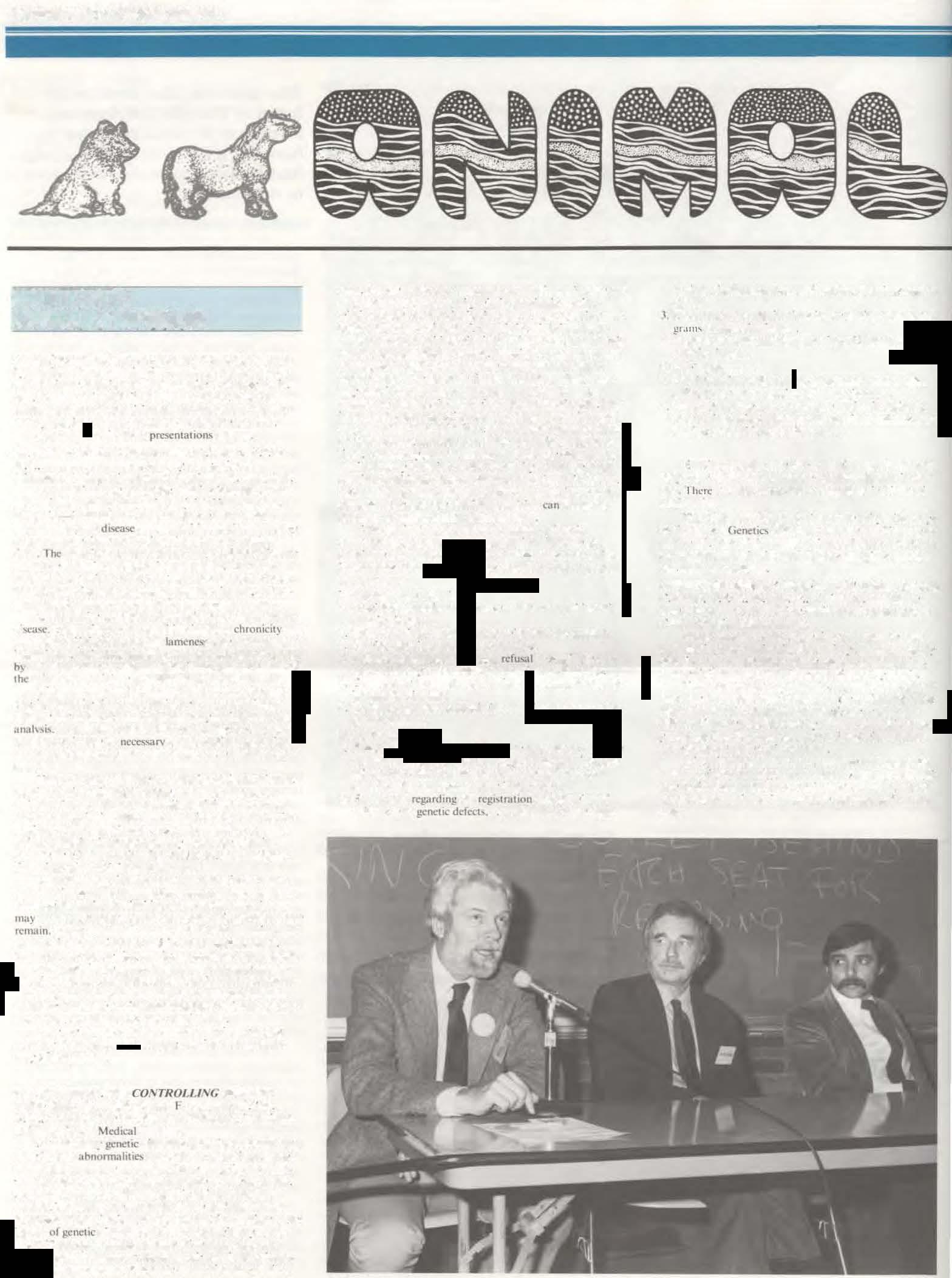
Hr�dOr!!itnitatiolb
I hhtcr ll'\U(d l.:ecpingunu ••n lli"CI1 •'JlJ'tO;t�·h Ill the: !!art) rf.'C'Il!!lllll!ln of{!Cnctic dr�oea�e:-, eg auhc gcnetrc!'-committee�that r:ol!ecL informatinnund �.:t•mpilc li't�of �CilCtk udc\"h i..llll\\n I<>'"'I.'UI Ill thehn.'cd.
') fll'>LCI 1111� !!itfllll!the CI!"tllltl and 'hoy,101!ol � anamah\\ith ticdek C' g relll"-11 h•ulln\\�gj,.

ll,llrnn ul anirrutl� unk-.,, r:cnrlictl h�oc ul\CfiUU'!!enelie Jck\!h.
Cnopcratc,\ith \ett:rmarratl\ 111 dc\cltlprngC•>ntwl prolnr!!'=llCIICdl'-<:a!>C'>

·t Surrwrt rc-;carch:mel th.:g;tthenng lll mlormation 1111 gcru:lr-: dL">Ca'>t."-
Ct'rtihrn�;i\gcn�:i.:s

I I'H�\ldean lmpan r al '0Ur<.'t' tlfoi\�IU.IIlll..'th.llo.,pc:c�fic ollllll\lthure fr._'(' (lf\(X'Ctlil'tl gt'lll:til:Jt.,.HOCf\.
2 \\'hen lahornto� rc..r...••rpr11gen) lt"'-llng":m11l..tble. pamid.: unp;trttal a'suram:e that ,rx·crfic.:xl .tnmwl...atenot C'liiTICf'til\pi!Cifi-:c.Jeh:teflltll\gO::Ill'\,
I ,i,trng ;tgCnl·ic, un: .rhh: Inf\rtl\ltk I."Cililt�·iltinn lor onh ,,k"\' nf the over 1501.:110\\ll !!Cncticdi'>Ca'>� en the do!!, ere j,a nc.:'ed lora murec;,lmprthcrN\C lorm <ll r:crulictrt10n.
Ihe \ctcrina�· Hthpita l nl the Uni\cr,llvol Penn'>\I· ,,tlllilnftct�a G<!n�il: Clinic flO �hmd<r) and luesda) ol ca�:h\\Cd Ihi,clrnrf.' f'rll\iiJc-. Jrtgnthlte tc'"lorl.nuwn or�u-pc..:tcd�nettcd"ordcr... nl c.lll�' nnd gtR"'>genetic l'lltn-<hnt to hrt:cdcr...

l\-llf"HITED1\/DV£) DI\L'tSFS1\DOC;S.Kenneth C. Rmt:e I)\ \1 \11 \ted St· (•.rtntt� R and Hen� Uu\\el Profcso,nrul\ltc,.Jtcrnc.th.mm.m. Departmentof (lrnit.-nl '-)tudresCPhiladclphi,IJ.
Renaldi,ea�-.. ofthe dng\\hu:h .Ire ptc..cntl) ''ell ch;mu:tervr:J ureC'\�ununa. f:ant:nlu S\ndromc �nul gi\CII-.un.r, ur.rte metab<lh-.m .md IJ,,n,rnn.n:nalugen�..,j,_ f'<'l)o..")•trc1-.t.Jn,_y,andrenal h)popllls�<J undd''f'bt-u t Ihe'"'"'cnmmon')mptorn� ,,f,!!Cnclic rcn.tltlt"-a..e th.1t ""'> heJctec.:tt.-db} a hreakror '''ncrrndud�ewe-.�i,,· urine \lrlumc. abnormal utinill�''' .11 ·• )llllllguge tdrhrteuunc.gl}ct)�uria). urinan cakulr. rcn;rlfatlurcat,, \oun!!,tgc lie" thant\\O�car'>lu,o..ocratt'\1\\rth f\'\luc�J £f0\\thuud 1!'"·-c''i'c U11ne'ohmic It '' 4111!1.' IIJ...dythat morelwrcditoll') .rncJ mctahc1lit: di,l-.I'C' \\Ill hede�crihcd in the luture. \lthouJ!h ll heR'tlr· tar\ IM\1' ultran..mi,.,icm j., uh\IUI"·thrC\itct nature oi gc�l'lir tran,mis,rnn i�rncomrll·tcl) UllUC:f'lt'oc.l 111 man) C'3'1.�
CentennialCelebration!
Canine Symposium
/JI.\Fl"i£STRA.,\\\1/S!::./BL£ I·ROM DOG.\' I0
1111.\l.t \S. I .twrcmx(,hclman. \1\t ll Or I'II '"�<l�lillcproh�s,nrof cpttknuolol!\; Chtd,�ccuon ol l·p i dcminll•ro and Ctrl f" 1\.nlo.patnd \ M r>.. Ph.D !c.•wm:rin (\lr.tSrtulngy:<.1ticl, lllh.�rtlllll') tlfC1uuc11 l'.lm,noh'�·
I>�Cilidm.tn reported thatr.obi�.31at.tl. neurologic \lr.tlmlcdinn tJfanuna!-.; and hum:m,, 11.1, read1cd crtdcm•� (Hllportttm' m Pcnth)l\at11a. Forthe nth pcrimiJul)

I?IU thruugh.lanuar) 19S4.:t tul.tl n!12�at-.c'\\Cr.:dia!!-
11(1\Cd m "ildlife .md dome-til:anmKtl'CJbah.)iOJL'.� �OWl>.3dog-.. ' lo\.fll m�-c•'IOn,,2J ..l.unh. 2o;quirrd and I\H>tlikhud.) lkdlnrdnnd Jt.tnkhn Coun11es.thmc: al't'OillliCJfor52 nlthe rahtd r.:u.'Cnun' Rthlt:Smo.'DI'\\';b moret'<�mrnon lh.tn r.rhic' m llng,.••� ha' tx:cn happt:ning. d-.c\\hcrc in the I mtt·J Sl.itl..,'-tnee 191<1 l)omc-.ti(.'anim.tl' pmnJc,,hulkrbct\\t."Cn ''iltJitle rahlc-.und hurDitn'> \\tccinateun 111 p<'l animal,, �tr.t) .tnimal wnholand f'Uhlil·�marcne au: tht: l.:c)' tn the prcvcnllLln 111human r.thu."' C"mrcml' there� .ne no rro\c:n mcth•"'' ut L"mrnllin!! rahu:' 111 "ildltle, I he t.·urrce1t rahtc" crrilcmic p•uul' tt> tht: nc:ed hH\accin:�tingl'ooth cah and d<•!:\' lj,:.'!Hl'-tf;lbtt."-. n' well a' ""enain hnr..c,anJ fuuil.tnunal' llun�;�o� <J.t mnca-.cd ri...t.. ol rabtt."ic'\p�urecanllC unmunll.:d\\llhthree:do�' l)fthc ht!!hl\ clfc'"'"·'dtrl•ledcell rubtC) \,rcctnc.
Dr. httpatric\.. rwrnteJ 11111 that rc�ularc'\.ttlllllattc>nnt ,,,,�,torl,<m.t.\lk�.urtl .tprrupn.ttc treatment -.cnctu piUttl.'tthc ruhhl ,,"'II :t' the: dog I,,,gft:t.'C'>onplnH�IltUnd,, rr!"·''"'"and hetchc-.an�:1 puhlt�· health conccrnu' \�ell 10t\lhl'IIC J'mhiCm
r.,nt::u:t \\llh lai'\;Je nf Jug hn••lmcmlb and .\m•lt}{tif••d••'\lt'fl'llftlft\ fll,l\ e<!U..C '"IllII111.11tun (111/UIIt'IIIJ\ftlnt1 IIIIJ:IC/111). �om�.· mit··�fStmOflinltnd (lwtlctll'llaJma\ he uunmtttnl h\tht«t �•llllilct wtth an 111lcctcddug.aml\\ill rrooucran itdl) m'h 10 people. llcnti!Lit.'\.... nnt lran,m•�thlc tu human' Ft.:.,, :sl"'' ''ill htt�human'>an mtt-t'>�n lt\h\ r.l\h, Flea" ''"' lht:tr htht nnl\ tn lt.'Cd <11\ hh,11d Ih�o-)hm:d 10catpetlll)!. bcdd111g. l'urntturc.ct�. 1Itt.•tmmaturellc; to,can 'unin· hu mnnllt-. in a 'acant home a111l
1\hcn rl".tdent' t�turn thc� \\til ht.•�lcCtt.'tl b� hull!!r\ Ilea� f'ti.!Utl!i)n theultnklc.. lre-.�tmmt tlllht indudcothe Cll\ inta�"ell ,,theantmal.


(,Wrtlicnt\ '' CllhC:d h� '3 pmt,l/o;tll par.Ntc. the mn'l Ntnmon intc:rnal fl·"·''itc(IfhunMn' in thl' United ...t.llc\. n"!!'ar�·'u"'·cptthlc to inlccttnn ,,ith the humuo�mrtlia'fl· <�nd ma\ dt'\d•'l''hrnnkcntcnth II " une�:nam a' to ''lltlhcr11r nut d•,!!'trun,mtt thetnllXtwnt�o.l humatl\.
HcamHmn(dlft�/ilarta1111mimJ""'' allc:.:t ,, human bnttnll\ an lrttn·tcd mo�uno, Ihelanacmigrate to the lun�'.tnd dtt.' \ noduk{,lrm'�nnund the: \\nrm' .mtl rc-.cmhk"a tllttllll ur1 r.tdiogrtph�. Tht. ''ormc; du rll)t 111;tlll� ur lt\cm thc hli.ln of hulllilll'. llunmn' ate aberrant hO\bol thi'> p;�r.t,tlc ·'' it dOC''"''t(.'dmpktc th hie��cle in m;m


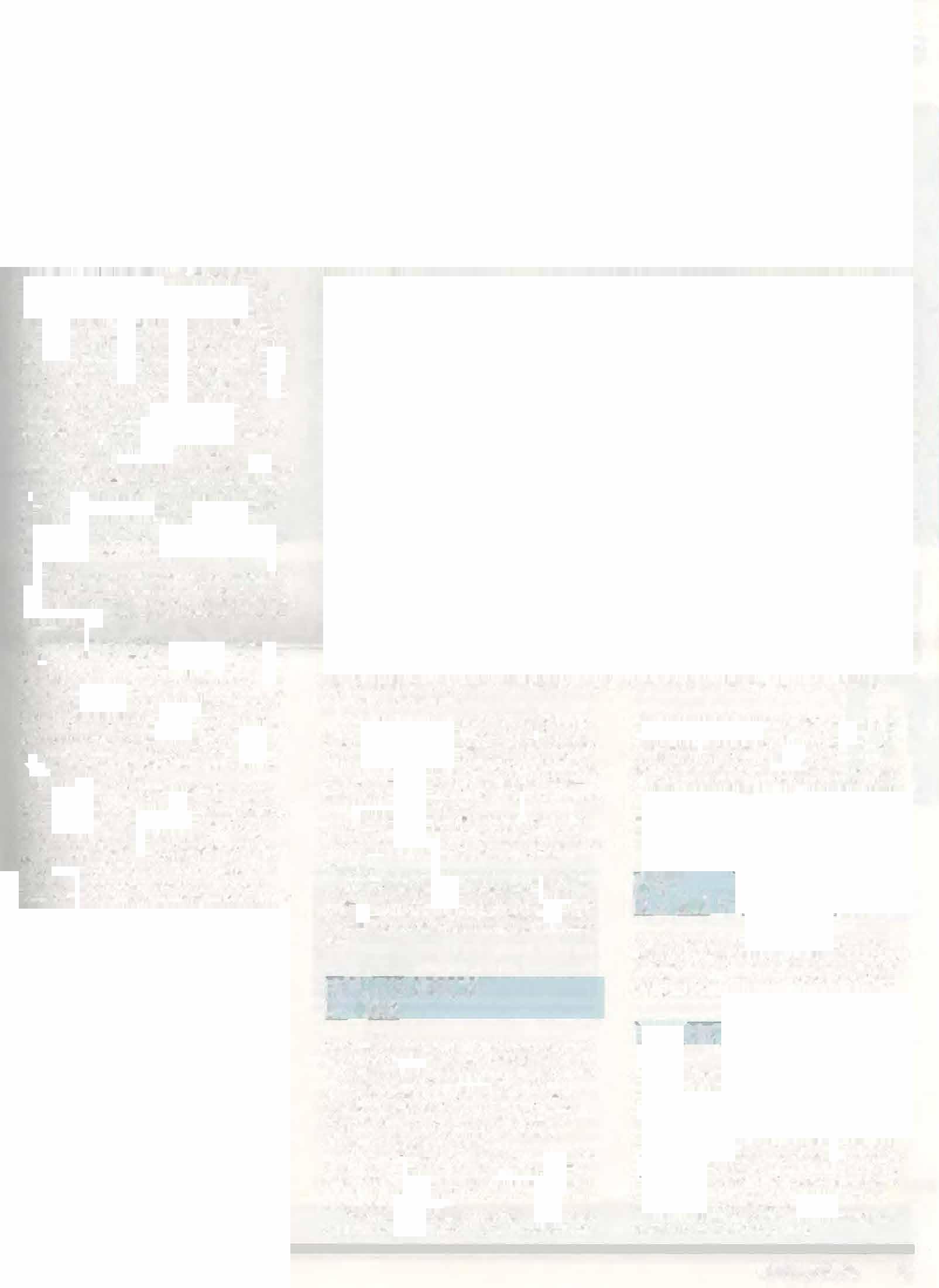
Iuc�roland ut•ularluna1m�:ram arc �-.1u...et.l h� ang�·,lu.>n •IfRuund\Hmn lto\l>nlrtt)egg,, U\llitll� J111 <.".ltlfll;' o��htl•lrcn Bhndnt:'' ''the mmt l>t:ttou' pw.'lhlc eotht�rucncc.
Iltcrt.•ure ••tlwrbJctcnal rny,uttc .tnJ rara,ttit•4],,_ CillOofdog'\\hKhIna}llc1rao'm'''ibkto hutnun.. Inr lunhertnh,mutrCin.Dr. K•rJ..p.tln,;\.. ..u_gge-.ban anu:lc: puhrl'lhtd111Ammo/ 1/,altlr 1t bm ltlll, \ulumeJ IS.:ptc:mocr (ll'tnbcr l%11 lltkd kDt:.cn..e-. InuNOt"tble fn1m C"ompan1"11 \ntmal'''' Ihmt.�n' m the 111lltcd �tate-..-
Ani'CSCTCRE. \lan \;t 1\.hdc. V\1 D a''(x·•atcprof�,,,ofnoc,thcsla. �u ture ha\b«n u�ful m trcatin�\anou'c,>ndi111111'm'lnimal,,c�pccl,tll� thtN: 1clatcd tochr<>n11: pato treatment'arc repone 10 hlock the ransmi..wn ol o.un�n-..Hion b.o:t"ccn the �nurcc: olthepainand 1111:hmin timulalt(IOolueupuncturc: P•lllllS r ..dune Ill �\eraI

V.i\�Jbect1QSJ popular method ''pl.tcing �emI.tcupunclll�needle-<nJdlt".J\rng them 10 ri<lt.'l: 20minute'> ,\m)ther nlCth(�tf "to tntt.'i:l a'nlution.tt th<''Heoftheacupuncture pomt�.Ihere i�\llnteinterc't iu la,cr \ltmul.ttrvn. SomctunL"'rnall pit.'\!�" ul gold.""ctor'lamtc.... , 'tee!arcpt'rn�ntntl) impl.mtixl at the:'itc nftheacupunc:tun:pnint�. [icl,IIC:II,t,mulatmn ma\ be-u"CC !\to.,tannnat..dllnlll ob)CCtlo theln:atntl'llt •
The .tntllldl' u'ualt� arc trc.lh:d<li1L."t: a \\l!t'J... furcrght \\l'CI..s.rht:treatment<; tnkc,tbmtt�0 minUII.'' I hn-.c that te�pund do �o ..tn\\1\ mer the ciphH\c:t:l.. pcrtod. It uwa.ll) tal..�"thn'C tll ll\c tre;.�tmenh he:hilt'thcrearc dcm''!!"" lh.u the amm.tl i' tmpt••'mg. ,\ftcr the etght trentmcnl!>. the: clft.'Ct la.'L"11 \,trtuhkand unpn:dic:whlc lt.-nj!th ol ttmc Irum wccbld\e_tr, l!aehamm;tlrna\'mtu•rctrcmmems at \\h;llt:\Cftntc.'I'\,)j.. Ihc-cfft.'CI l."ts. \mmab, mu\ hetlll non-�tcJCHdnl antt-mt1ammatOI)' \\hen the 1rc;ttmcm',m:'filrto,;d The\ �hould not ha\.;oc:ortiCthtCr<ttU' fut at lca-1 ,, mumh �fnn:a.-uruncturc •" th��di1Jg. ontcrkre"tththedlet.'ll\c-neo... ol the 1n:atmt.'llt.
1\t \.ItIll'. tlntt'wtth lick11runulomas. cp1lcp«): and unhritb indtlkrcnt partsnfthcho ) arc trc;llcll, It is 1\l'CI."'>Jr\ lflhau•\'CICtlllartalh tn:at anima\-. \\tlh.111oiCCUrntc dtagno,C,un<l report thctr rc,ul". Whenthi' i' done. th�c:untlttsurhfm\\ht.:h acupum:tun:- j.., U.\Ciul\�tilbecome dC<�r



POPULAR BREEDS OF DOGS
Ihe C"oclo.cr Sp•mid has repla•'cd thl' Poodle a� America':-. rno't pnpul.trhrt:l'd, Ihe Pm'IJic:. the mo't fltlf'Ular hr�"tl fur�3 con...:cutt\cFu,-...drorpt"d to �nd flla�'t' In lt)KJ. the ·\meric:m Kennel Cluh !t,tcrro 9!..1\Jb C'cx:kcr "fl0111lCb anll 90.250 l't1oJJes rot:II retltStratiun� \\C:I'C
I.I)K5.::!-IS.I .thr.tdur Rc1ncvcr�. Doberman Pm..chcr� . {icrmun Shepherd Ilogo;. (iuldcn l�ctrtc\cr'. Bc.tglc,. \hntature-..chn;ttt/et"'.Dachhund.,.an Shct,Jnd �hrefldo!!l't:ClmJ1lclcd thc -topten.fhcrcare I�'hree<hreghtcreJhy the ,\mcncan 1\.,'llnclClub. There :11eotherrcgi..trie->. including the l ntted Kennel C'lul'!\\luch rt:g"ter'nrrrm,tmatd� �'iii.UOOd�lg� .tnnu;lll} ''"'' Champ10n�hip Dug Sho\\S in th"rounm .tl't'held und1:1 \l\ ( T"hc\.. ( has a Mi-.c.'CIIancuus Clal.-.. "hich mclud� ,\u�tralian ._�'r•e�. Border Colhe�. Ca,alicr Ktn!! Charlf"'
-..paniels. •·inm'h Sp1U \ltnmtun:Hull lcmt'� .tnd Spinuni lt�tltrtni. Ihe.,c hrccds cannotColffipt:letorchumpton.�hrp potlih hut the\ ilrcdigihlc lorOhcdrencefrial�."\lt:\\ hn.'\.'(h .rt:l·eotl\ admrued to cl!t'll� m the Amt.:rit:4ln Kcnnd C'luhsiud Boo\.. are h:roahHound,_PortU£Uc<.e \\'ater Dog<> .tnd Tthetan "ipantt!h. Iheo;e thrt.-c hrc.'l•th,formed) l>h0\\11 only m ··l!llancou' Clas.scs. nll\\ compeu::tn Regular Cla�'e' fc1r champ o hep poinh. Ihe:Uune� �h;rr Pc1. a bn::ed rcccl\tng mudt puhhdt>.tsnuta'\<et rccogOIIi.'d h) th� 1\mcncm Kcnnel (tuband cannnt beenten.-d at 'ho''' hdd undl'"r .ICC.rult''>.
WHAT IS A MULE?
,\ mukj,the'>tcrilc.h)hnd olhprrngol a male:dnnJ..ey (tacka�'iland ah:mafC'hor-.�lmurcl. ll " -.auJ tnbc \tron�cr ph��icall} .md mure intelltgent than thehor-.c Ori£inall\ bred forht:a\·\ t.hah work. Ihe) arc no\\ uo,ccl fnr nding. dn"'"!!and mcrng
BOOK REVIEW
"nnonand Schu.,tcr\ Guitlt>ro (tJI\h�(,ino J>ugnetti. \.1onlt.�-oli "i"t!<il. L.S Ednor Ill)!(\} ll>anel\cellent guide to thechar.rctct'''te"nfthet.lil'lcu:nt hn:ed� of�.< ttli Ihecode-; .ue parttculurl\ u-;cful to thn<.c trvmg 10 dcctdc nn a hrttd. Ihe) includeatlupl\tolc•a.,fl.m·c•tl'e>rtragmcmtm}:.xood IIWUSt'r.llt'Ct"\'IIIII:.pal't'.Jom:·fi\t'l/,,fl(llld It11/1thifdrt'IJ, trcmqutl.ul'lll"t"mJovr,,lumw·lm·m'{.bl..c•.,to/ratdand ,..,, \'ocal. The:Introduction gi'� all kind' ulinll'lnnalinn ahout hi,ltlr). the t·at 10art and ..:hara�terhttc' nltheCilt I h�.;colm (lKIU� ,J Od dl:"o�·riptltlll ofthedilh:rent hrccth nrca great atd tothosetrymgII' leatn ''hat breed the) \\ant Tilest: nrc not official hrCL.-d·.tandatch llti'> I' un tdeul "fiNboul;"t.�ran)one:\\:�ntmg to learn about�:ats ant.l choooin� a brc:cd.
Canine Symposium Mrs. Charles A. T O'Neill. chairman ladies CommiUee of the Veterinary Hospital ol the University ol Pennsylvania Vet Hospital
Spring1984 7
nyonc \\ho ha-. coped with an itchy dog or cat J...no\\� ho\\ e\a-,perating thi!. can be. One cannot explmn to the ammal that scrntchine \\ill on!\ increa"e di-.comfort. and mo!oot owners will not sit and watch their pel mutilate ttself. a quick tnp to the \etcrinarian "' -.cheuuled to seeJ... rcliel

"SJ...in disease� reprc�ent a large portion ul ca-.cs st:cn m a "mall animal practice." -.aid Dr. WiIIiam H. Miller. Jr.. assistant protessor of dermatology. School of Vctennnry Medicine. lJnt\.er-.it} of Penn...ylvania. ··Man} case" are mmor and can he cured fa1rly quickly.'' But in �ume antmal the �"-in problem i-. seC<lndaf) to underlyin!! disec.N:. or tt ma) be due to allergic-. or autoimmune problems...The sktn j.., the \\ 111dow of the bod\." �aid Dr. �Iiller. "It can rcncct change" in the hOd) Or the CO\ ironml'nt ul the animal.''
\\'hen the cau"e" ot kin dt-.casc are more complex. cxtcmt\C testing may he reqUired. rtw; is nhen bC\ond the '>COpe of a practittuna\ ladlitic... and tht <.tnimal l!oo referred to the dermatology clinic at VH l P. "We arc one nf the hustc"t clinic'> at VHLI P." e:-:plained Dr. Robert M. Sch\\ arvman profc�!lor of dermatnlng) nnd chief ol the Section of Dermatology. "\Vc sec more than 2.000 case!> annuallv nnd our laborato� of elimeal tmmunolog\ handles a multuudc of tests. not only for tbc ho..,pital. hut also for more than 500 practitioner" in the (Heater Dcla\\arc \aile\ area .. In auditiOn to Dr' Schwan7tnan and Miller three resident..
!-.Ce patients. They Me Dr. Lind•t Mcdlcau. Dr. Ke' in �hank\, and Dr Richard Inng. c:;J,.in problcnh can run the gnmut from an itch cau.,ed by Ilea bll!;.., to comple\. nutormmune dt,ease. "One or the most common rrobkm we '>ee in dog'> j.., Ilea brtc atlerj!\ said Dr. Miller "It is the primar) c<Htsc of �l�mmcr .;kin cnmplatnt� in dogs."fhe cure appear' to he -.implc. all !leas haw lll be remU\ct.l from the dog and ih em ironment. Thi!oo frequently require.., cxtcn,t\c treatment of the hou.,e and yard and repeated prc\cnti\� treatments ol the dog.

Dogs and cat... ltke people. ha\c allergic' ''hich cause itche�. "Dogs often ::.uffcr from tnhalant allergic!-.." !.aid Dr. M tiler "Pollen. dust. \\OOI. fcathers. all the -.arne thing\ people .He allcrgu; to. \\hen ;t per.,on has an allcrg�. he or !oohc \\ tll tr\ to rcmO\e the"c thinl!s from the emironment: Oog\ cannot do that� 0\\ner\\ On't take ur the carpet. lhrow out the leather pillow" or remn'e phlllh 10 prevent their d<'g Irom lh.'hing." �o other '"ay-. haH; t<' he lound w cope with the ailment.
1\n allcrg� il> an ahnormal immune rc,pon-.e nf the bod\ to a particular :.ub:.tancc ..In an allergy the unmunc rc-;poiN!. \\ht�h normally '"" defcn"c mechanism. hecomc' dc•Mll�tl\e.'' c\plamctJ Dr. Mtllcr. ''When \\C.: treat thc'e animab. \H.' tl) to get the re-.pon-.c hack on the right track. in essence calm tt dm\n. so11 "on't do damage \\.'e h) po-,en-,nuc the animal." This is accompti-.hcd through u '>Crte' of '>pecinll) prepared allerg)' \actincs. "\\ hen an ttch� antmal '' brought here and \\e ...u,pect inhalant allergies. tc.,ts arc performed totdentif) the offending '>Ubstancc." said Dr. Sch\\arvman...Once it ha-. heen tdentilicd. \\c prepare the \accine \\hich has to he gl\cn .11 regular intcnals to "eep the immune re..,ponse under control.- The dcrmatologJ'-t" at \IllP \\ork cto...ch with referring practitioner-. to arri\e at a r\_;gimen most comfortable to the ammal and t:om cnicnt tu the O\\ner. ·•Jt rc4u1re-. understandrng and compa,-.rnnatt: 0\\11Cr'-.'' said Dr. Miller. " f hese -.hot!. h;ne w be gl\cn throughout the dot!'s lite -\llc:rgte., cannot be t.•ured. the� can onl� he: contrulkd. \.1u't owner.., are devoted and under'>tandint! and \\Ill do any thing the) can... Both uoctl'\� pointed out that inhalant ullergie!oo appear to lx an Inherited problem. "Tht'> �hould be t..cpt in mind w ben breeding animal!..·· the� satd "Don) breed dogs '' htch hme gcnclicllll� predt,po,t.-d '>ktn disea<,co; "
Inhalant aller�ie... in cah are not a-. common. •\nd that "' good. Cats do not like: injcc· tion'> "The) \Cr) 4UlcJ,.J� figure OUI that it j., time for the needle.'' �aid Dr. Miller. "1he)


8 Bellwether
Theskinisthewindowofthe body.Itcanreflectchanges inthebodyortheenvironmentoftheanimal.
h1de and become �h) and other methods of treatment have to be found."

Substance.s in the emironmem are not the only ones causing allergies. Food can also be the cause ofallergies. This il> not as common in dogs as it is in cats. "Cats ha\e fewer inhalant allergies. but more food allergies." �aid Or. \1edleau. Food allergies usually first manifest themselves 10 a ral>h. "Howe,•er. it is a rash that Itches." said Dr. Schwartl!nan. "nm an itch that rashes as occurs in inhalam allergies." To Jetermine \\ hether one is dealing with a food allerg� and which ingredient cau es the discomfort. a hit of patience and testing are required. The animal is placed on a diet it never had before. such as lamb and rice. If the rash and itchingstop, one is dealing with a food allergy. The second step is to find the food which causes the reaction. "Owners have to add one ingredient at a time for a period of three days.'' said Dr. Miller. "They may have to go through a host ofdifferent foods before the offender is found." Once this is discovered. the cure is fairly simple. the offending food is withdrawn.
\lkrgies are IUM one cause ofl>kin disease. Often a dull coat or bald spots signif:r more �erious problem!> ..The owner may not have noticed an� signs ofendocrine disease until the pet\ appearance changed.'" said Dr. Miller. To lind the underlymg cause. tests are required and once the dtagnosi. has been made. treatment mu't be Instituted to correct the disease. '·Liver and k1dne� problems can manifest them�elves through changes in the skin. as can hormone tmbalances. We u....uall) handle the treatment
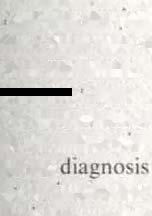

after consultations with other specialists. It is easier for practitioner and client to deaJ with one department rather than with three or four."

Dr. Schwartzman and Dr. Miller are very interested m skin problems caused b) autoimmune disease. ''Fortunately these are not too common in dogs.'' said o; Schwart7man. "They are rare. but can be fatal if left untreated." Autoimmune skin diseases such as pemphigus also occur in people. usually in middle-aged person.s. Both doctors would like to see more cases in dog:� in the hope of establishing a model to help de\elop treatment plans for humanl> affected by this disea!>e. They are conducting their research in cooperation with the University of Pennsylvania Medical School. Research is an important pan of the department. Drs. Schwartzman and Miller are engaged in a project in cooperation with the Medical School to find a better treatment for acne. Dr. Medleau hasjust begun to project, also in conjunction with the Medical School to examine the normal bacterial flora of the skin of dogs and cats and its relationship to skin disease. The study may yield some important basic data which may be helpful in the treatment of skin disease for animals and humans.

The clinic sees a lot more dogs than cats. "We really would like to see more cats with skin problems." c;aid Or. Medleau. "We have seen quite a few cats with psychogenic alopecia."' In this disorder the -;kin changes are cau·ed by beha\ ior. not disease. Cats lick and lick a part of the body and pretty soon their hair falls out and the skin becomes irritated. "Usually the cat
is upset at something." said Or. Medteau. ''We try to figure out what bothers the animal and then try to eliminate the problem. We may have to use tranquilizers to break the habit." A simiJar problem exists in dogs. They can de\clop a lick graunuloma and treatment is often very difficult.
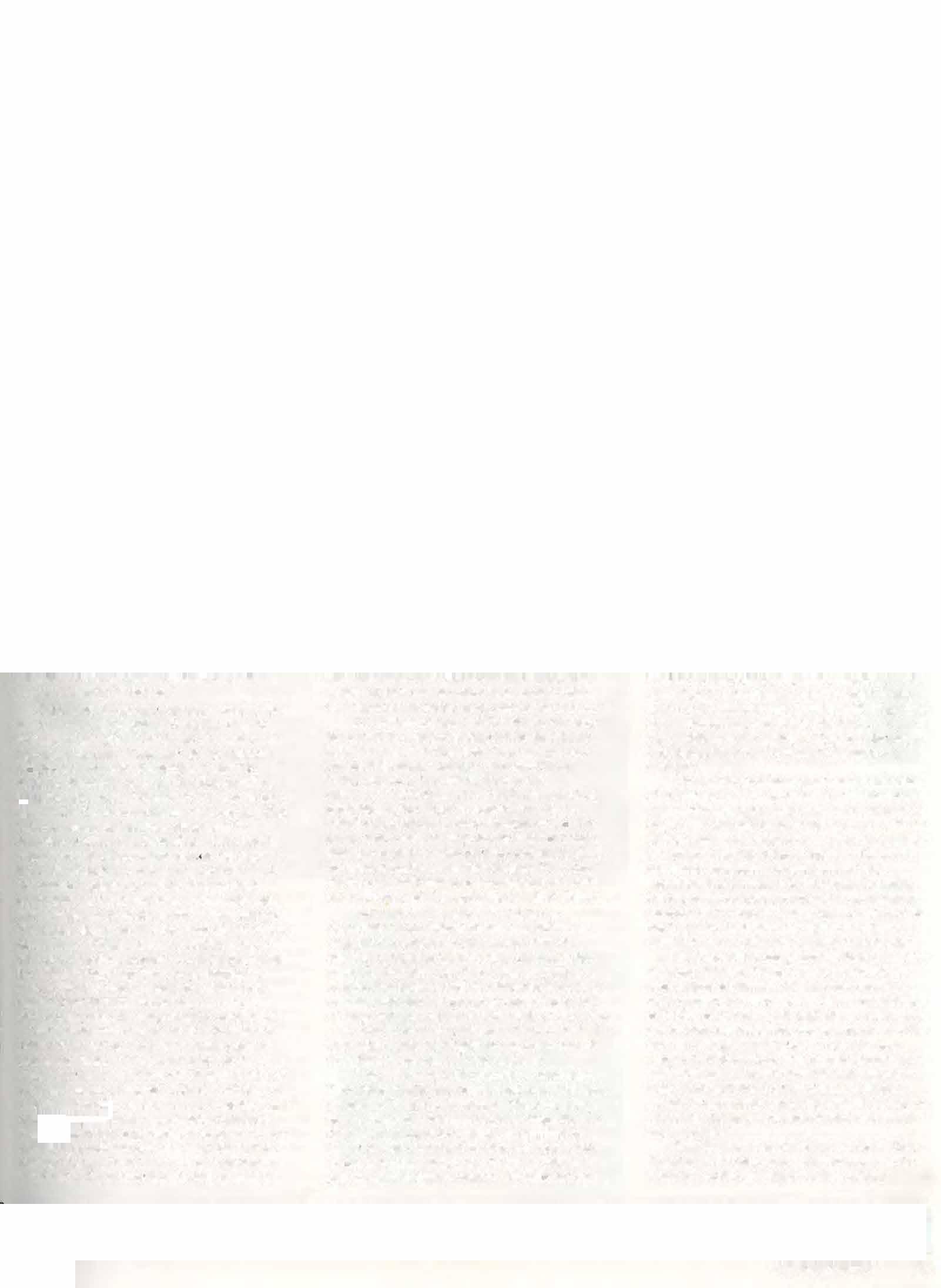
Other skin problems presented to the clinicians can be caused by mites. One of the most severe of these diseases is demodectic mange in dogs. "We will not treat breeding stock with the disease unless the animals will never be used for breeding," said Dr. Schwart7man. "There is a hereditary component to this disease." He explained that treatment for demodectic mange has improved in recent years and is no longer as noxious to O\\-ners as it once was. Animals still need special shampoos at regular intervals but these are not as offensive as they once were.
Skin problems range from minor nuisances to major disease. Many cannot be prevented and require dedicated. de\-oted and conscientious owners to carry out tbe home treatments of baths. ointments. pilb and allergy shots. But pet owners can minimi1e the chance of skin disease in their pets some"' hat. ··Animals need proper nutrition. care. and regular grooming... said Or. Miller. "Their emironment has to be kept clean and free from parasites. Breeders should a\oid breeding closely related animals to minimize the concentration of traits for inhalant allergies."
The dermatology clinic sees patients Tuesday through Friday and appointments can he made by calling 898-4680.Helma Weeks
Spring1984 9
JOIINE'SDISFASE ATHREAT THEDAII<Y INI>USI'RY
ASSESSING THE SCOPE OF THE DISEASE IN PENNSYLVANIA
uhne\ dt..ease i., re-,pon"'lhle lora lo�:-. olS1 bllhon annually to the Arnen<.a n ltw...tod, industl).Thestaggering tm,,t...,occurbecause of reduced producuon. higherincidence ofinlertillly and ma�tlli�.''eight los'andgreater expense' to mainwjn daif) and hcc..:f herds \\ith Johnc\dt..ea-.c. The tJisca:.c: ''...�.1uscd h) \Ireuhaneriumparatunerculosi\.n stubhoml) infecuou'l bacillu!lagain-.t \\htch noeflcctl\e treatment e\i�ts.
lne di.,ea...eis found in c\Cl) 't<H� It t:-.c-.timated that :u least 10 percent ol Penns)hanm's t.-attlean: tnfected and thedt'\Casc ison the mcrea,c. Todc\eiOpla!lter.and moreaccurate tests.and todetennmc tJ1eeconomtc impactand the prl'\alence ofthedi-.ca'c Ill the'itale.tht.. Pennsyhania Department of\griculturc has funded a three-year\tudyat the Untvcn.ttyol Penns�lvanta\ �chool of Vetcnnal) \1e<.licinc: "\e'' Rt)hon Center The gr.tnt \\U'madep<.h-..blt:through the effort' orthe Penn')1\ania Grange. un organit.ationconceme<.labout theimp..1ctand 'pread of Johnc\di!.CU�e. rht:re�earch team b hcadcd b� Dr. Robert H. Whitlock. professor ofmedicine at theSchool The other researchersarc Dr. John P 1-ctro''· Dr. l�mrence1. Glickman. Dr. Cha rles L Bcn,on, Dr llelcn Acland. and Mr. Jarnc' Bruce. M'\. Bobbie Cook an<.l �1r. ()am "chot1berger. re"earch technical a...!.i�tants. Abo part oftheteamare Dr.. Tl.!n) Wilson. UHf) Hutchm,on Chm Ro�l>iter and Sharon Harmon. .dl from Pennwl\anta State Lm\el">tl\. Dr. Richard Merkel. t\AOC. Arne!>. lm\a, i"a collahurawr<burc Drs. John D1ck. Da\1d Krabel and Max Van Bu�k1rk otthc Bureau of .\nirnal lndu�try. Harri"'hurg. Pcnnsyl\unia .luhne\c.h-.e3S(!.,, \\astmgdtSea..c. L'ichurdctcritcd b�-;e\erediarrhea and rapu.J v.etght kh� in






the later '>l<lf!l!'> or mkcllon. \1any ol the infected animabdevelop ma!\tlll�and other-;ccondnl) dt!\ea'c'-. fheec�momtc lo'>s due toJohne·.,ma\he greaterdue to th \C!COndal) di'>ea\1!�. includmg infertility, than to theobvtou'los� a�ociatcd v.ith mu,dewa,tmgand diarrhea .lohnc\disea:-.e'" -.ecn in all nuninnnt:-. (it t�c.."-pL"Cinll� common 111 goat'-)and it hu-. �prcad worldwide.causmgl>taggering Jo_�.,tothe li\e�wck indu-.t�. panu.:ularl� in third world counnic-..


Oltena farmer is not <1\\.tre that hi), herd i..<o infc(..tcd. L-.uaiJ� onI) on: or I\\ocattkexhthll the")mptom!> ofdiarrht:aand v.eight lo!>...,at un� onettme. And � thc"esigtl'c.:anbec.:au!>ed b) other illne-..,c..-..,Johnc·\di.,ca-.ci.' not looked torat liN. primurtly hecau-.c furmcr.arcumman: of the di..case. Frequent!) the unproductive animals areculled and�old for:.laughter. Then. latt:ra fewmoreanimals 111 theherd rna�dt!>playthe sameS}mptoms.Johne'sdtsease. once in a herd. IS hard toelimtnatc. h has beenfound that mfectiOU!> bacilharc shed by aCO\� for �ix to eighteen monthspriorto the appearance ofan)!>)mptoms: pasturesbecomecontaminatedandotherc;utle areexposed tothe bacilli. Once the infection becomeswell established and symptoms appear.


granulomas ha\·ede\dopcd 1n the..· animal\ intestine mterlcring with the ab::.orpuon of protein and orhcr nutnentsand.e"en though thecow con.,ume::.11' normal mtion. weight lo:-.s occursand th1., causeslowered milk production. a greater susteptibilit� to di...ca� and frequent infertilit).
Rc�e�u�hcl"> found that th�:greate:-.1 ri....k ot inlccuon j, to nc"borncal\c� andanimals under Olll'\cator.tgc '-;uchl";Htlcma� Jx•comc inJCCtl'U at binh or....hortl) thcrcalter hut the')tnptom' \\ill not app�:arforl\\0U)ctght ��ars. II ha-. been found that JntmaJ,0\'eront.•year ofage <HC mort n.-sbtant tu theorg;mi-.m. It j, rt:c.:ummendcd that all cul\'c-. beremoH�d from the1r dam imm diate!\ after birth and that the) not be permitted to 'ud..le. Herudderlllil\ hi:C<)ntammateJ \\ith the hactlh whicharcon the -.tuhle!loot and tn the p;hture. 1hecal\1..-..'houlu hegm:n colo-.trum lromco\\-.lreeof.Johne\t..li,t.-a Mpa-.teurited colo...trum rnecahc�\houlu herui..ed '" tndl\IUual hut\, :1\\U) fn>m thl' herd w mmimue the chanL-eot 1.'-PO,un: to the diea.-.e ll1c dtagnm,i' of Johne·�di,ease1!-trnade moredifficult bcc<IU'-e it tct.h�fourto�ix month� to obtain a pn�itt\C tecalcultun: CurrentI\ the -.tutc laborutol) hcrt.' in Pcnnsylv;JniO ha-.a backlogofmon:than one )Car lorthc:-cculture' The �chool .-. planning to olet todo these l'UhUrL"'>on a Iccha,sJuring the nc\.t lc\\ rnnnth'-. lhcrcar�.· ...umcsemlngtctt..'t' lorthedtseasebut the--earc nut tOtal!\ rcliahlt..'. Oneoh1eti cofthe ,tuJ\ i:. to<.lctern-iincwh1d1 test j, t e mo't accur<He.· Scrologi\.tc-.t'ar� much fa,terth.tn the fecal culture and an accurate tt.�t \\Ould cnahle th� iannet to rcmo\eu di�ca,ed animal at unce

Herd 0\\ner-.\\ho ha\t: Johnt:\di�ea-.e in thctrcauk ma}elect toentera \oluntary progr..tm v.nh the swte The O\\ncr. 'tgn a memorandumol unde...tandinl!"htch outhnt..-...that am CO\\ tdentific..-d a" po,iti\�on a kcalcultun: mu�l · be-.em to slc�ughtcr. trth�cow j,ctpprat,ed h) a -.tate\Ctcnnarian. thefarmerma� reec:hean indemnit�urnounttngto90 percent ofthe different..·e betweentheappr;.u,cd \alucand theprice he n:�:ct\ed tor meat. fhe Iarmer mu-.tabo agrc..�to commuecultunngtheadult cattleycarl� and to dt,mlect theareawhere the po�tmcammals\\ere hl>U.,ed.

10 BelluJeth.er
Johne'sdisease. awasting disease, ischaracterizedby severediarrheaandrapid weightlossinthelaterstagesof infection.
J\ ,.,cLine ha' lx--cn dc\clopcd l.lgain,t luhnc\ d�'>ea.'e but ib the "' re-.tnctcd to herd., \\hCu: the.: dLc;ea,�o. lm-. l'x:en cl!agno-.cd It can only he ghcn hy a ..tate; \c.;terin<mnn <md 11 j.,dkcll\e onl) tfcalve� an: \Ucdnated prior to 35 day!! of nrc f>ara inrlic:ue tlwt the vaccine i' ciTccti\e in reducing the incidence or ddaying the omet of rhnicttl ..ign-. nfIhe inkCtJOn Some orthe \�.tccinatcd .mimal" ha\e lx-cn luund to ha\l' inlectt."d mtt."\tme.. and they 'hc.-d the org<Ini-;m. though the) appear to he dinic�tll) nonnal \l�n. .t lump often fnnno; at the inJt.:CIInn 'lte. Th1' c;m hrcak open and dram and "o;lcm to heal. Jhe vaccine is tlil ba,cJ <lnJ \etcrinarl<ln' who accidentall\: inJL'Cled nne oltheir fin!,!er. de\eloped a ch�onic mlcctinn and the linger had to be amputated.

Once a calf j, \"<1ccinatcd it Lan tc'\t po"ttl\c not nnl� for.lnhnt•\ dt,CU'\C hut al"o lm tuhcrcuh,,i,. Cattle muq he-.pcciall� tlkntilicd "' \acci· n:uctl and .1 "pecial tc;''' tor tubcrtull''l'i' mu't be dnne to mle out that dtsca..,e.
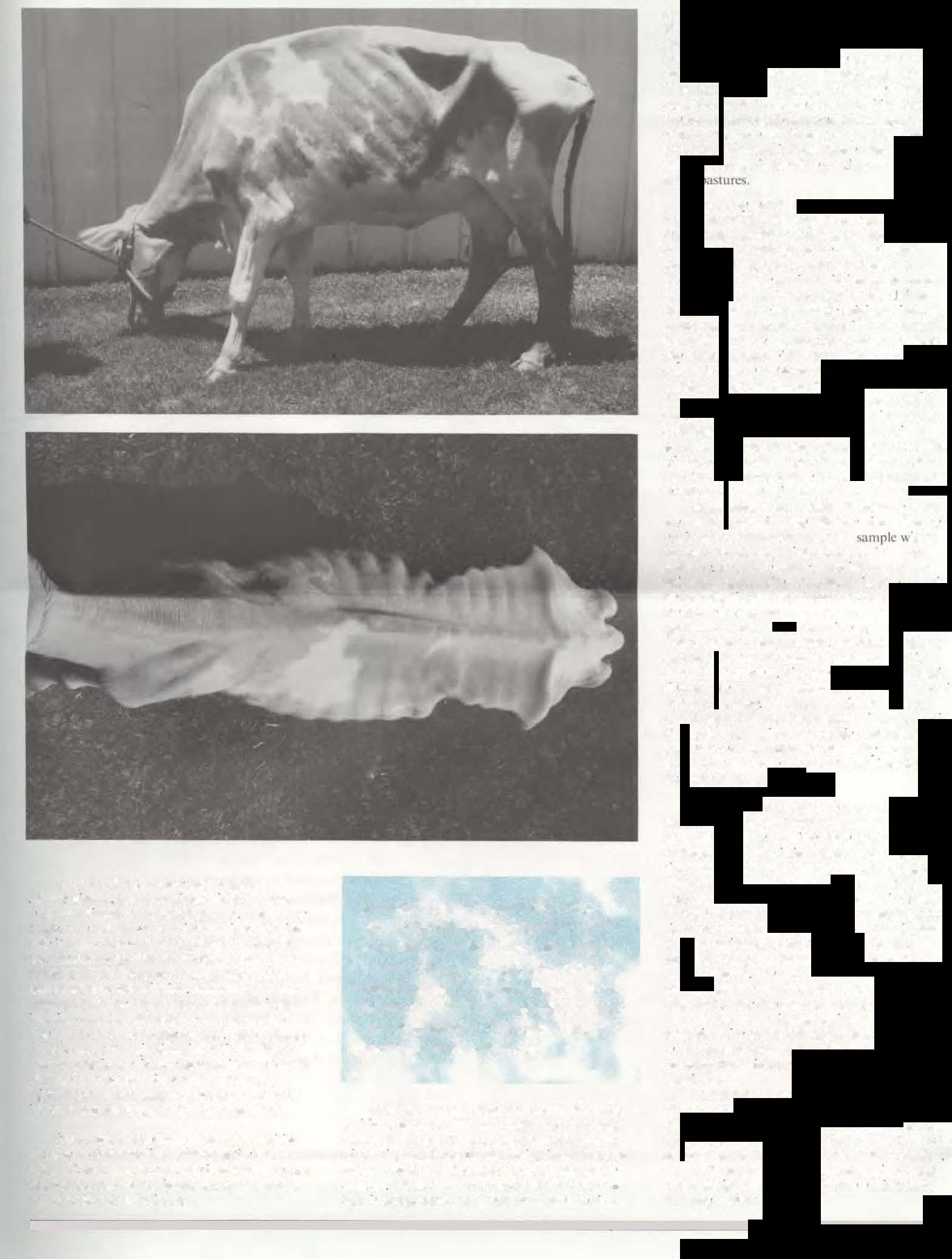
Researchersfoundthatthe greatestriskofinfectionisto newborncalvesandanimals underoneyearofage.Such cattlemaybecomeUifectedat birthorshortlythereafter,but thesymptomswillnotappear fortwoto.fiveyears.
J\,idc from -.accination and 'eparation of the calf Irom th�cow soon after hinh therearc other mca,urc!'. that can tx: tulen to reduce Lilt.' .,pread ul thL' di'IC<l'-C. Cattk .,l10uld he led Irom <1 trough ur bunk -.o that Icc<.! cannot b contaminated b\ manure Water 'huuld be prov1dcd from tank�or tuh' m the pastun.:. not pond� or �tream:, \\htch

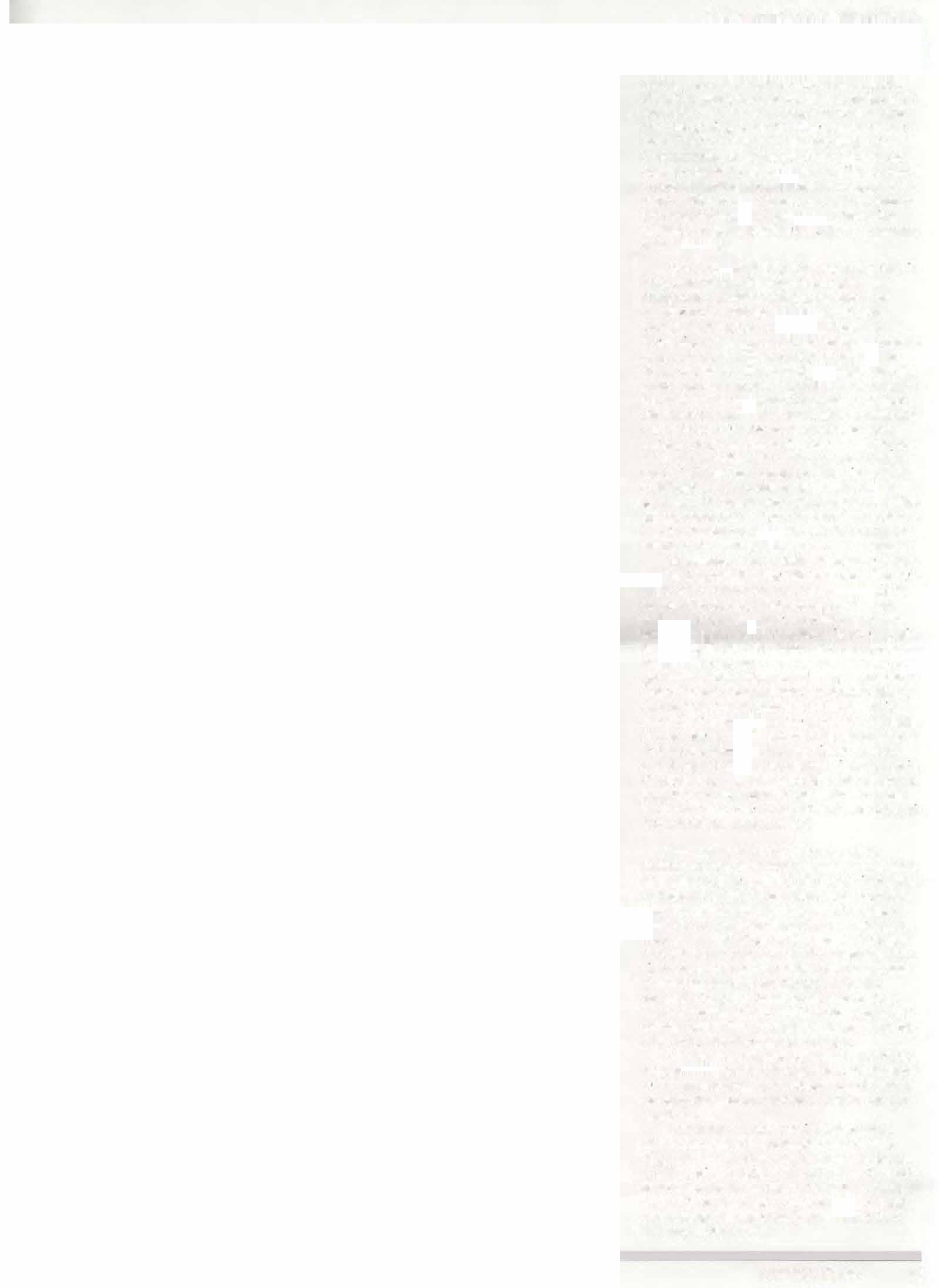
can become contaminated with manure. Bams should he kept cle<m and the manure collected in the stable should not be "Prectd on pasture land u"cd for gra11ng: it can he safely �rread on crop land. The herd sht\Uid he cultured ln:qucntly (recommended l\\icc peryear) �lnd any infected <mimal� :,hould he rento\ed at once. 1ht• hactllw. is 'cry 1esistant anti cun �ur'\i\e in the ground lor years making it \Cry difficult to eliminate from a propen�. Ho\\e,cr. 11 is not knn\\n htl\\ often animut-. becom�: mfcl!cd h� gra11ng from contaminated pastun.
H1e stu<.h ''hich hegan in September 19�3" <1 big undertaking. During the lir�l ph�se the re�carchers will ohwin fecal. ti��uc and blood �ample-. from 1.500 random!� l>Ciccll.:d cattle brought to slaughter at a slaughtcrhou-.c in \\'yalusmg. Penn-.�hama. Tht<i facility \\a� chosen hccau'e it handle-. 10 rercem of all the l mted States cull CO\\\. "hkh moo;tl) ongtnatc Irom the northeastern st<.ttt:s and Canad.t. rhe 'amplt� \\ill he studied at Nc'' Bolton Centerand ell llniversit\ Park: culture-. \\111 be done. ti�sue studi� and -.crologll' tests ''ill :.tl-.o be pertormcd on e.tch �unple. To get an id�..t of the scale of the project. there \\ill be 9.000 slide-. alone lor the hi,tology worlo... 6.000separate serologic tcsh w1ll he done. 4.500 cultures and 4.500 tissue samples wtll he prepared. l"he result.; lrom the '>erologic test-. then w11l he compared t<) those from the fec.'<JI cultures and it is hoped that this ''ill assi\t in detennining \\hich of the '-Crolugtc lCsl' is the meN aL'CUrdlC. (n addition to thc;>se initial laborutof) -.tudie!'.. o''ners ofappro\tmatel) 500 CO\\:, from Pcnn�)l\nnta which were included in the..ample"ttl he tmced with thl' help oj the Bureau ot Animal lndustl} These;: O\\ner-. ''ill reccl\c.: a quc,tionnatre, rc,gardle,., ol \\hether tht antmal ,..a-. po�•ti'e OT negatt\t: ftlr the dl'>ease. It i� hoped that �l\\ner-.. \\ill t:oopLmtl.' <tnd <tn!>\\Cr accur.atel) the que-,tions a.s this inlormauon '"\Cry unportant to dctt:rmine the economic effect of.lnhnc·... disca...c and to gather the factor.; that cnntrihutc ttl ns spread and suni\al II a CO\\ is f"ounu to he pOlllll\c. the O\\ncr will be infonned bv the Bureau ol Animal Indu,tf) 1he Bure-<tu '"tt'al-.o recommend steps to pre\cnt the sprcnd ol the di-.ca"e 111 the herd. TI1e findmg ofa po..itl\c .lohne\ cow at -.laughter ..., ill lUll affect the cligibilit\ lor he-c�lth charts forotherem'"Irom the herd smct: the po..,lti"c animal has hccn rcmO\cd.
he ..�ond pha'c ,,,. the 'tudy ''ill be initiated in May 19�-'. Here ��trchcn. wtll seleLt at random l\\ent) to tl11rt) dail) herds tn the .;tutc and obtain detailed mlonnation 'uch a-. produclton and health rccortls. The\' will abo obtain fec-al culturesand blood sam-ple-.�m each animal 0\er -..ix month' ofage on the farm. It '' hoped that thi" phase ol the stud� will prmide inlommtton �bout economic; IOl>'-es on a hcrJ ha�ts. and that the inc1dence of the disease can bediscovered The group hopes to t�t twn to three hcrds a month 0\\ncn. will ha\c to agn.'e to participate and as Johne's disease is a reportable di'casc. 'orne ma� ha\e -.econd thought..,. A' the dio;;ea..e '' making mroad� into Penn..ylvama dati) hen.!-., it is hoped that the larme� "ill coorerate because the infonn<�Lion j, needed to study the inc1dencc and to determine the economtc losses.
The study will abo pronde infonnation ahout altemati\� to the length) tecaJ culture diagnosis. Ifa qwd. 'erologtc t�l (Jn he found. it \\Ill he ol grc-.H help to the dail)man. Once it j, determined \\here we stand with Johne\ disease we will be much closer to controllin!,! ll� spread and reducmg the to,.,� to Penn')1\anm'sdaif) indusu;.. Helma Week-i
CentennialCelebration!
Spring1984 11
THE SECOND CENTURY FUND
SECOND CENTURY FUND ON SCHEDULE
Gifts,subscriptions,andbequests to the Veterinary School's Second Century Fund campaign totalled $11,109,643 as of February 8, 1984, according to Vincent B. Murphy, Jr.. campaign co-chairman.
This total is an increase of slightly over $2 million since the Second Century Fund was formally launched on October 13, 1983.
Among the gifts and bequests recorded since last July I are a $25,000 bequest from the estate of Helen B. Dechert for the Veterinary Hospital uto help people who love their pets but who could not otherwise pay for their necessary medical care�"a bequest of $4.000 to the Veterinary Hospital from the estate of Alma W. Sheahan; and a bequest of $19,032 from the estate ofJohn R. Taylor to ''establish a fund for research of distemper."
The Veterinary School also received an additional distribution of $108.374 from the estate of Alfred RosenthaL and a final distribution of $85,051 from the estate of Charlotte Everingham. the latter added to previous distributions and divided so that two-thirds endows student aid, including a $150 annual prize to the fourth-year student with the most outstanding work in small animal cardiology, and the balance provides equipment in oncology and cardiology.
The American Kennel Club completed its $24,000 commitment to the School's work in canine oncology and $17,200 for the American Canine Epilepsy Service.
The Pennsylvania SPCA made a third annual installment of $10,000 toward complete funding in 1986 of its student loan fund. The Lancaster (PA) Kennel Club made
a $1.000 scholarship grant. and the Pocono Mountain (PA) Kennel Club presented $2,000 to aid a veterinary student from northeastern Pennsylvania. The Chester Valley (PA) Kennel Club also gave the School $2.000 for scholarship aid.
The Harrisburg (PA) Kennel Club gave $1.000 to the Veterinary Clinical Research Fund, and the Rockland County (NY) Kennel Club donated an additional $1,500 to the Canine Genetic Fund. The Delaware County (PA) Kennel Club sent $3,000 for equipment for anesthesia.
The Mabel Pew Myrin Trust made an operating grant of $198.000 for the Alarik Myrin Memorial Research Building at New Bolton Center, and the Hunt Foundation completed a $6,000 gift for the C. Mahlon Kline Orthopedic and Rehabilitation Center. The Groves Foundation contributed $2.000 for equine research at Ne\1. Bolton Center.
The Janet A. Hooker Charitable Trust awarded an additional $5,000 for kidne} disease studies in dogs, and the Oxford Foundation granted $8,000 for the ovine medicine program.
An anonymous subscription of $1,250.000 to endo\\ a chair in equine medicine has been recorded. Under the terms of the gift. no additional information may be made public until the chair is fuUy funded.
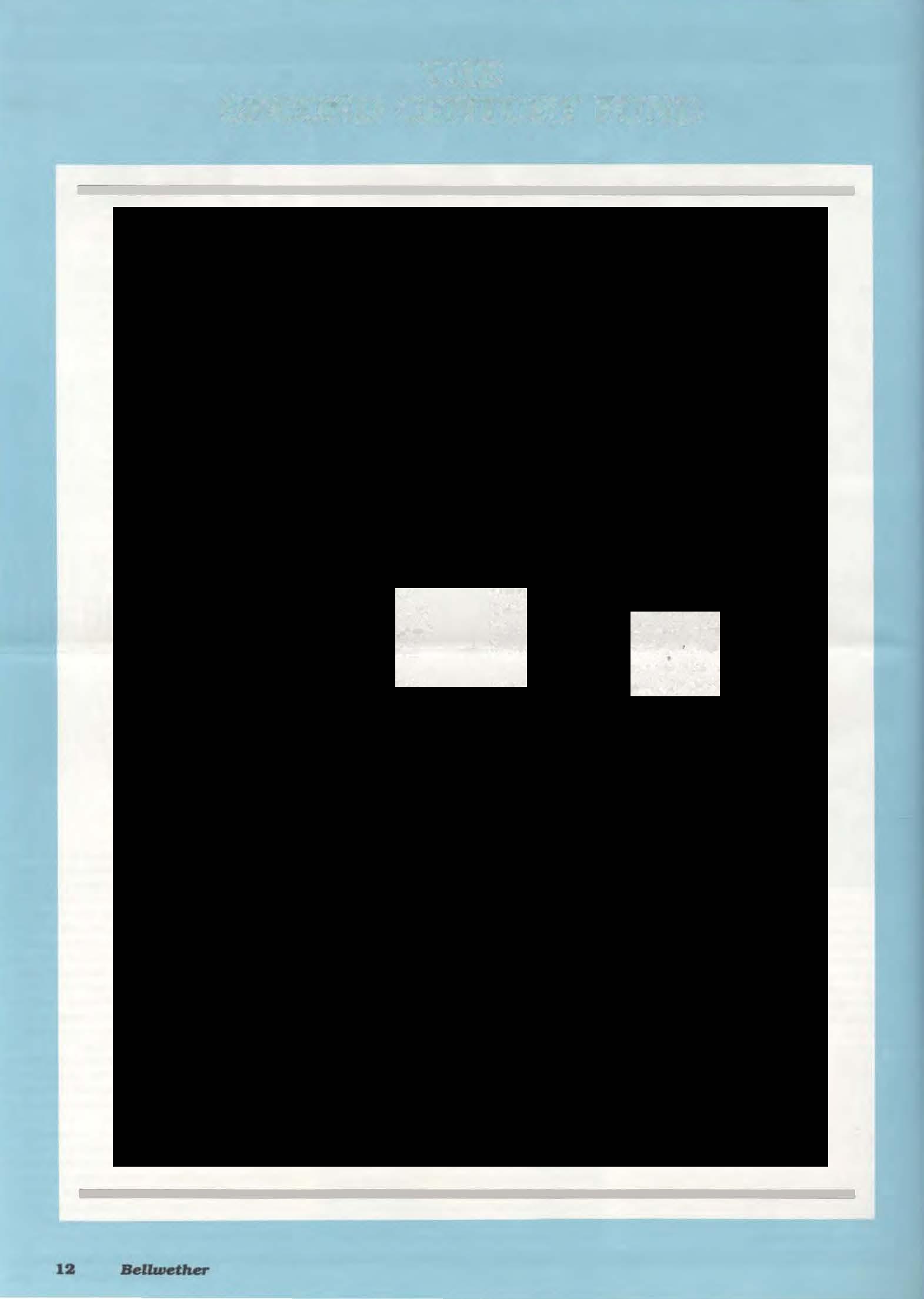
Major individual private gifts ($100.000 or more) have been received to provide unrestricted operational support at New Bolton Center and to assure a neonatal care unit when New Bolton Center's new Intensive Care Unit is built.
And as of the end of February, our Annual Giving Fund� reported the following gift totals: Alumni Annual Giving-$79.685 from 420 donors� Friends of the Small Animal Hospital-$71.726 from 1.175 donors: Friends of ew Bolton Center$24.435 from 108 donors.
12
ALUMNI AND CONTINUING EDUCATION CORNER
11·� lxen a OU<i) \\inter for Continuing Education and \lumm '\llatrs atthe School
C01\Tl LIJI\G F.Dl'C-\TlON
l\\O Cununumg l·ducallon programs for meat tn'\pectors and gon·rnmcnt Yctcrinarians involved in meat tn-.pcction \\ere co-spon-.orcd b)- the School The fir'>tprogram. held on December 3. 1983. wa� a �atellitc tr-dnsmt'>sion telcca\t li'c lrom Washini!lOn. D.C. and tmuht:d 40partictpants fhe second program. a t\\o..Jn� conrcrcnce held on FebntH!') II and 12. 19!<4 tn\ol\cd '>IX lectures three of ''hich ''ere pre-.cntctlb>y mcmtx·rs ol the Vctcrinal')' Scho11l -.taiT (her200 meat inspection employees attended thi'lC\COL \\.c hllpc these progmms wtll lx J�t the hcgtnnmg ol future coopcratton bct\\Ct.:n the �chool and the United \tate...Department of \grrcuhurc.

lhe X4th Penn t\nnual C(lnlcrcncc (Janual} 26 and :!71 ''a' our mu-.t \Uct.-c,.,ful to date. Held at the �r.mklin Plata, 6()()pralttltoncr-.. 2.50 tuden... fat.'Uit� aoc.J :.tafl member... J3 s�tJ...er., and 65-.t.ientific e\hihit\li'S parttcapatoo in the l\\O-da) progntm.
A\cterinal) Technac t an Progmm was held at \IIUP on Sund:t), Jochrual} 5 19!\4. One hundred and eight) tt.-chnician.,ancnded lecture' ga,en b) \'Hur'tuff member-.. Due to the O\erwhclming n:�pon-.c to thi., program and our limitt:d seating facilitie� \\C had tn tu111 a\HI) participant-.. We apolog11c for :m) tncun\cntence to ll:chntcmn!:>. We hope: to hold another lcchnict.tn Program in 19X5 \\ith imprmctl scalingund luncheon facthlte.,.
ALl'M'\iJ '\FW�
,J/wmul>c/1 .\fllllnlat, \/111 JCJ. /I)H./ Philaclclphia
CUll/flU\ ,\lurnni l>a\ IYX.J \\all be a cdcbrat�<m of our �chno\\ pa.,t. prt-..cnt und luturc. and the l.XOO alumm \\h\l 0\l'f lhl· ra\t 100 )1.:3r\,ha\c contributed 'n much to the "chon(
Ahullcl lundu:on \\ill hel'ullo\\cd b\ the dedtcation ol the�trchw:n as MAUJ�t�IARCH" and a rededit.-:.ttiun ccrcmo�\ tll the Ill.'\\h renovated buildin �urroundin�theqw;dr.mgle..lot�us a-. the ...,chool cntc� it' 'CC{ltld centun \\ith a ne\\ race.
Cia-....Rcunum din�cr., ''allbe held as Iolio"':
Clas' ul I'H-t. Jtl. 4.1. and 59: I litton llotel on \Ia) 1�. 19�-1
Cia!'.:. of 19.t9. 54. M. 69. 74. and 79: Franklin Plata lintel. ;\.Ia\ 19 IYS4


The Ocncrai Alumni Omner Clor tho!>�! ''ho <.�re nntt'!Ckl'lrattnu classrcuniDnst vcar) Wlll lx held ou \1av 19. IY8o.l. <It one uf Philatl�lphm'sncwe<;t and mo�tC.\CIIIng hotels I he rmll �casOn'>.
Plan� MC ncin[! finalitcd for the Centennial Sctcnltfic Conlcrcncc at the Bt•llc\ue �trntfortl on Oclllih:r IS. 16. 17. 19� A...ample ol the -.peal-e� and lltb·
L)r,C'barlc!. C1pcn· Calc:tum �1ctabolism
Dr. Su�;an Cotter: �1cdk:.tl Oncolog� tn Small \ntmal Practice
Dr. Stephen Ettmgcr Drug nlcram m o;;rnan
Animal Cardiolug�
l>r. 0. <.tlnlher :RcprotluctheRtolog) ofthe \Iare
Dr. :-\id' Pcdc�cn Icline Clinical lmmunolo�
Dr. (ilcnn Sc\clln d\an ... tn Ocular Iherapcutic'
Dr. Oonah.l WulkaRm int: \.1alc Urogenital <iurgc11 I\1MC inlormattnll \\tit lolltm.
f[:'ljfEN'IIAI A\\ARr>S
Dean Rohcn K \1ar..hat.. prc'>erltcd theCcntcnnmlt\\\urdnl Mt:Til to 1\\l..'nty-ntnl' practitioners at a 'pccial l·crcmon\ nn Janu.m 26. 19X4. in Philadelphia. I he C\Cill \\a... pall or the X4th Penn Annual Conference lot Vctl·rinanam. aucndcd b� more than 600 pructIItoner�.
tontlnuedonIS
CentennialCelebration!
Spring1984 13
PENN ANNUAL CONFERENCE
fhe fir\l Or.'-amuel F. �hcid) Memorial Scholarship
\hi'rmardt:tl tn Mr. Gary M
Huxu:r �tunehuro. Pcnnsyl' itrlla. J l>CIIlCH '"uJenl. The �1.000\l".ht,lul\hip wa' pre-.cntc:cl h\ the Pcnn�ylvanin Vctcrmur. Ioundutron. an
or�anuatlon c'tablished b) the Penn''l\,tnia \ctcnnal) \4.:dical i\''O(Ii.IIIOnICI 3.'"1�1 'tU






dent' to meet the highcost ol a
\Ctennar) mc,lt�ul t:ducatron
The �hola!'lhtp '' namt.-d in honnr111 Dr '\chcu.l� C\ '29)
\\hu died Ill 1 ..
TheSchtmlnf Veterinary
Medicine and the Pcnnsvlvanm
<;tate l lli\cr"t� 'pnn�ored a
\p<.-cml "icrnrn;rr onJohne\
Dt...c<he on \pnl I:!.-It 19!W
On tho: liN dil\ the�mar
\\a' held at 'c''Bolton Cerucr.
:1nd on the'ccnnd d.'l\ an •den
Ileal pm�mm "a' prc..cnted :�t
Penn '\tate Dr. Koh<rt H
Whrllod. and Dr. John Fctro''
,>f the '\t'" Bolton Centerstuff pr�cntc:\1 p<tper....
\1L'fllbt1'>oftheh)('l(janti Safcl) l�tion �enice (t-SIS) Cll the l nned 'tato I)epanmcm of \gnculturc r�,;cntl� hdd a �atellite rct.:runlcn;nce 111 the: Vctcnnury ��hoot. M� <\!>hra \4arko\\llt d1J an nut'-lJndmgwh •llmill..ing local arrangement� lor tht' rncc11ng''hrch "all a tnunrng 'l..,.,loo lor \."mfliOH'c., t'l I"I"
l>r.Ralph Brinster, Rt\:ht.ml Kmg Mellon Prolc,,m ol Rcpn;lducme Phy,tolog' and hi� �trch colleague, Or
Rtchard 0 Palmuer ul the llli\CI1>Il�ofWa,hmgton \\Cn:
,1\\Jrdcd th�: "e'' 'or!.
C!dC:nl\ (I(<)(len� 1\\\anJ tn
1ol land '1edic-.!1<.;c:,en
cc� tor 1\lXJ fhe a\!.·:ud relYI£.-
111/t...,the �rch of D"
Brio<.tcr and Palmiter m the rllll.'tOlllJIXUOn ol fU'>IOll gcnl"o
tnt('I mamnUIIian egg� and the subst:quent phv,iologtcal

C\prc:.\iun of thl� t'ICnt..., work that ha' profound 101f'lh
c.ttion' tor the ...tud} ofm:�ny bmlogrcal prl>hlems
\Jr.Ke\in Lud�ig, n (UII· ltlr...tudenl.\\<1!>il\\ardetl the 19XJ [\\CO Prill'tnl'.mt,itolllt-'\ lllc J"lrilc ol \500,, oi\\Jrded to the ...wdcnt 'llhtnllllngtlw best cssa) 11'JUdl!�·d l'l� the pam:.th)log\ facull� ul thc \'etcnn.'ll)' School \.1r I ud,\ig\ e�'\3) 1s mlcd "'Cr)pto,poridum tuncc m Human and Anim.tl llealllt."'
Weare not thennl\ \Ctc· nnal) l>Choolcelchra tll\1! Jn .umivct<.af") th•� }t'<ll (uur I!IOth!) The Bohlgnu Wtcrt· nul) �chool in hal� Will matk 11\:!(lOth b1rthda) 11'1 <.,cp· temher 19�
Dr. l.awrtnce'r.C.lid. man.as,ocwt«:. protl."'>�m 111 eptdemrology and ch1cl,St-c· Iron of Epidemrulul!'· h;t' �n ,,,,urded a SU.ICHl !l'·'"t tn the t\\ MA Found.111on lllr research on '"Canu1c lg·\ Oclil.tency: Susceptihrlit\ tc1 lnll·ctrons ofthe Rl-...pinliM� .an•l (othlromtestmal Trn,·t...-ln \.1arch 19X4. Dr Ghckman ''ill \I<ott Ioulouse. rIUII�'C.at the imitatlon of the rrt•nch !!ll\l'mm.:m to'tud\ <� p<t ru,iUl ,]lY!'J...e m hou...c"t\C"> m the rural outh\\e�t 't:etion tll tiMI count") While mruro�. lk (;)id..m:.tn has JCl'eplcd ,Ill tn\il<ttion tO \ b-11 \\llh 'CICnti\1' 1ll the Scottish (ommuntL-ablc Dil>l..'il!le Unit and thc [)1.·purt· llll'nt ulCommuni!\ 'vk-Jr�mc. lllmcP.-.11� ofGhl\go\\
Inc \eterinan '-chool n."\:el\t.'daS5.(klCI \.'lllltrhuunn from the DeH>ntP\1()ug "h''" ASMJCtallon I he}!Ill"·" pl"l:...enJed h� \lr... h1hn \ I;.1l1ll"e. Jr prc-.tdcm nl the "'"�eration Mr' I alm'l!" \\!IV�.., on the \'lH P I .tdtl'' Cornnmtec. Her hu-.band co·dl<lll' th� \11\'PCommittee ol thc \econd Ccntur\" I und
Or. l. 1\eil \t•>ore. prutc''or ol ph"iolop\ m mcdtCmc. partrcrrMtcd m lhc \m�ncan Collegeul Cardtolnv' p1>�tgr.rcluatc cnur-.c: un �\lclhamsm .tnd Ihc111p\ ��1 Cardt.ll Arrh�thmia,.�and ga'" u lecture h\ lll\ llation .li the lhlU\ton Eiccrlll. ll>l!\ ...,IKICl\ \1ecting(Ill -Eic h\,IUI cal \4appmg hxhntqu�..-... for ldenllhiOfl lh�· On!!lll ot Cudial \rrh�thmr.h -
Or.l>:nid �.Krunfeld. Fhtah.:th .end \\'rllruru \\-h11nc\ Clurt... Prnlc\,OIot �lllntlnn. .. wa-.thc lcaturcd \(lt":�l..cr at the :\e\\ Yurt 1-:�nner' '07th Annual Oltltlc:r .11 the tJninn Cluh tn 1\c\\ \uri.. ( 11' un Januar\ Ill.JIIX4 Dr Kronte!J",hlpu.; \\.t' -stm\.-.:hnulo,!!\ ·•
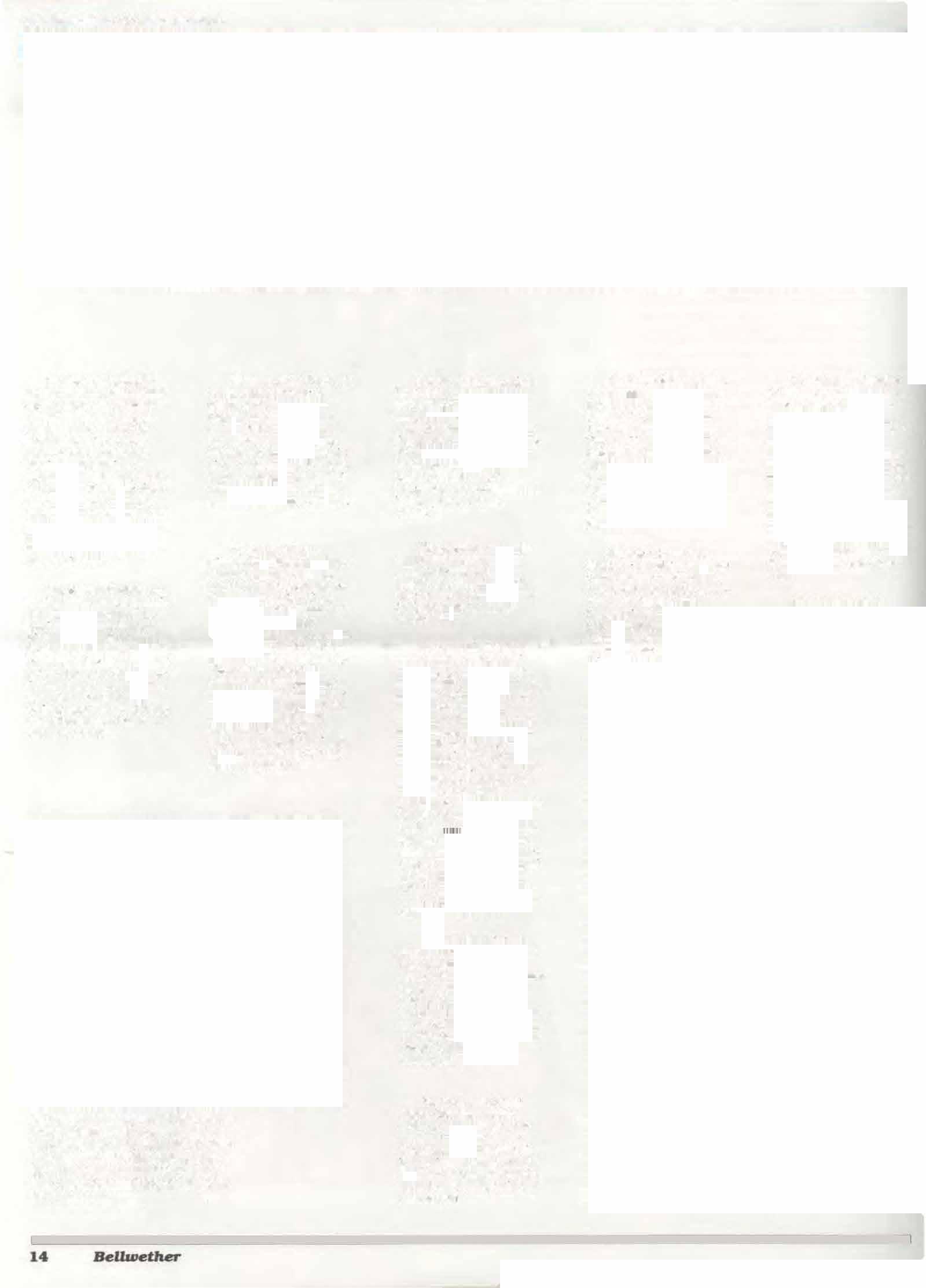
Or. :\-tan (. \\alter "a' a\\arded ,, 'f'I.Oil(l P•''tp.r;toluate lclln\\,htp h the \mcnc.tn Kennel <.luh lnrt\."'C.tr-ch tn onhopt'dec\Ut!lt't}.
Or.\\lllulmH W:lddell (\ "35)ha' rt."\:tnth punti,hed u hu�\1.. 111\17ttIJ/mI. \funm I t'/l'f/111111 \ftodl•lll•' !Frlt.«,en. 'hi)) I h1' ''a rt.'\t:.cdcdrlion oil a 19C\<i puhlu:at1on \\hic:h louhc' on the prohlcm� laL-al b\ tlw hl.1cl.. man 111 uhtaming. .tn cduc<tllun 111 H'tcnnan m�.'dicinc. In itdditrtln 11 pamt� .1 hroad (llCturc 11!the ht,tOI) o[ 1he prolt"-'lnn Dr. \\..rcldell \\u..'c·•l-tuun,ferand d1nx1or m the \'ctcrtnur\ 01\''"'n ol fuv I.e!,� fn,lltui<" lor liftcen )t:'.tf'o lie ''no'' n:trrcd and h\� 1n lla"uu
.John K. l-ung. 0.0 rec"\:ntl� don.Hcdh\O e..'qui�ite pic(;l'' of lum11urc tu \lktm Hnu>e. 1'\t:\\ lloltonCenter. Ouc J'!C'\.C: u.:d..u S1..500 u (,l"urg�:" Ill mahngum butler� lrn\ d.tmg fromth�· ninl'lcentll �--cmur andtheCllhcrtl> a f.:J. cral i.l m.tht'}:!l\"} hutlcr\ dl-.;k rrvrn the pt•ru>\1 1!-illtlISIll \,tlucd .1t :-.3.500. ln Oduber 19K.l, I>r.Joan ()"H•rcn prof�,..,.,,l,1>l meJcmc o.h,,,.r\-il 1h1· clmre<£1 �..,,j,,n nt the- Hurd Cnmn.�rall\c Rc,pi',IIUI) lcrllnt: m (;'lucago.
thr�da'"'· u�unrlar runu1hu· tinn '' matk tutlwltl'lr.11'·
The llonol"llble 1'4:nr<,..e llallo�ell.'-'c.:r�·tar� 1lf \!tuculture f1H l'enn'' 1\.tni.t. h." unnouo��d tll.ll the l\<1rlm..-mol \J!!m·ultun: \\Ill pr,.... \Ide a!!r<lllt uf t-tO()Oto lh� Vctennaf\ '-ld\111'11•••r&a•�h on -fhc 1\ethu!!\.'llt''l'nl \\t<J n lnl1uen/it lnl!.:ai•m 1n Chrcl..cn' " I he �rant '' lut tlw pcrilld .lanua� tu tunc IIJX4. and tho.' rc.,c.lldl "ill lx- under tht'd nn ot I >r. Rolx-11 J. EckroaU..·
Or. Loy C. Awkerman presents Mrs. Lillian Bryanl llbrarlan. with a dermatology textbook in memory of his classmate. Or. John J. Connolly. Jr who died recently. Upon the death of any member of the class of 1952 a book is presented to the library in his or her memory.
The Oela�areC unt) Kennel Club ha-.dN1<t� S'.()(l()h' \ HtP111 purchl t l-l' e�.tUipmcnt \\hu�h mcawn."' �arh11n diu,aJc rnt\halc1l .m Ihecqmpment "Ill pro\ide.111 .tddctiunal margm of,,,lctv lnr an1mal' undergomg hrnm ami �·he't 'Ufl!Cr\
Dr.Phalgunt (ouplalt:t'hl:cnil\\.mlcd,, 'f'\.''t;l''•�tl.l\\ grunt 111 '-li.OilCIIl' the: I cukcmra '\ It' nt \m\.'tl�-:1 Dr. Gupta ''.1 mcmhcr ol 11r Iorge I.Icrrcr\�roup mt c <.omp,lr,HI\1! I r:ul..cm•a Rc,card1 111111 ul N�·''Hnlton Center
CentennialCelebration!
ALUMNI AND CONTINUING EDUCATION CORNER
continuedfrom/J
The recipient!> of th1� rresugiou::. award were: Dr. loy C.A\\kerman (V'52), Manheim. PA; Dr A. Cle\'cland Bro\\n (V'59). Burtonsville. MD; Dr. \ancy Bro\\n (V7J). Plymouth Meetmg. Pt\; Dr. J. Roben 810\\n (V'37). New Castle. PA: Dr. Stuart A l-ox. IV'53). Glenside. PA: Dr. Doris J. Emer:.on (V'54). Bud..ingham. PA: Or. John 1. Enck. Jr. (V/0). Carlisle. Pt\: Dr. John D. Gadd (V'32). Cod.cys\ille. MD: Dr. Rtchard H. GaetL (V'35), Geuville. \lY: Dr. hed R. Guenther (\''52). Newtown. PA: Dr. Lillian A. Gtuliani (V'57). Bryn Mawr. PA: Dr. George L. Hartenstein Ill (\"40). York. PA: Dr. Jack 0. Kno\\le� (\1'38). Miami Beach. FL: Dr. Paul Landb (V'39). \;urfoll... VA: Dr. Bernard G. IC\ inc (V'SS). Tom� River. 1'\J; Dr. Tom Maddux. Newark. DE: Dr. Victor A. Mengheni (V'..l5). Media. PA: Dr. Da\id A. Mem, Ill (V'54), Creamndge. NJ: Dr. A. Wayne Mountan IV'S I). Latrobe. PA: Dr. fodd 0. Munson (V'JI). Weston, MA: Dr. 1'vtarc A. Rose11berg (V'71). Cherry HilL NJ: Dr Fred R. Rude (\''58). Philadelphia. PA: Dr. Hen!) P. Schneider (V'34). Philadelphia. PA: Or. Palace H. Seit7 (V'JO), HarrLo,hurg. Pt\: Dr. Robert B. Shomer (V'34). Teaneck, \lJ: Dr. Harold M. S. Smith (V'4J), East Hanover. 1\IJ; Dr. Eme:.t L StL-arl� (V'JJ). Phoenixville. PA: Dr. Robert L Ticehurst (V'3�). Wild\\ood. Fl :Dr. Vernon R. Yingling (V'57). State College. PA
ALL:MNI DIRECTORY PLA"'NEO
�Let\ keep m touch , 'vVhen�\er School or Vctennury tvtcd•cine Alumnt meet at a convention. a reunion or on a trip the� arc most likely to pan with those word!.. TI1e bond� lorged during the Veterinary School year::. are strong and the benelit!> deri\'cd lrom profes:.ional friendships and continuing contacts are \\ell knm-\n. But therewn be a problem: it'.; all too easy to lose tmck of people as they mo\'e along the professional route.
Sraning in Janual} 19H5. "kcep1ng m touch,. with fello\\ graduates will be much �1mrlcr. With so many .Uumniexpressing interest in the whereabout" of classmates, the School has arranged \\ith the Harris l,ublishmg Compan) to produce a comprchenloiVC Alumni Director).

The directOr)' will he divided into f()ur section:-..



The lirst pan Will contain interesting pictures and information about the SchooL This will bt: followed by an alphabetical section with an individual listing for each alumnus and alumna. Entries will mclude: name. cla::.s year. professional information. such as clinical spectalt). position or academic title. hospital afliliation. oflice and home addre ses and telephones.

The third section will list alumni by class and the la.,t section will list alumni geographically and by specialty.
The director) information will be researched and compiled by the Harril. Publishing Company. The data "ill be obtained in Arnt h) means of a brief 4uestionna1re sent to alumni and will be vcriticd by phone in September. During the telephone contact each alumnus will be given an opportunity to order his or her personal copy ofthe director). Your cooperation m providing updated information will help to ensure the success of this comprehensive director). rhe enllre project will be undertaken at VIrtually no cost to the School of Veterinary Medicine. The Harris Company will linance the project through the sale of directories to alumni. The Veterinal')' School will not benelit linancially.
The publiC'cJtion. \\hich ba.-; been planned .b a personal and professional reference volume. is scheduled for release m .Janua!J 19K5.
SPECIAL CENTENNIAL TOURS OF VHUP IN NOVEMBER
The Vetennal) llospita l of the Um,erstt} ot Pen'>)tvan1u School of Velennal} Medicme (VHUP) \\>ill oiTer spec1al tours on Thursda\ and Frida\-. 'o..,ember 15 anJ 16,19X4. to our tnend:. wh� are 10 Phiiadclphm for the AKC"s Centennial Cclebr.llion.
lou['; "ill begm each da} at Ip.m. and Wtll be conducted at regula r 1ntenab until 6 p.m. Adm1ssion tickt:t:. mu) be obtamed by \Hiting to ..Ccntcnmal lours. ·Vlll P. 3850SpruceStreet.Philadelphia. PA 19104. n1e rel.enalion reque..t �hould indicate the day and time preferred for tal.· ing the tour and alternate choices ot ume On the tours. 'lSitor� \\ill be shown many special rcatures ot VH ll P and get an undeNanding of the complex facilitic.' relfuircll lor patient care. leaching and research in \Cterinary medicine

19 Alumni DayPhiladelphia 21 Commencement
11-15 C.L.Davis Formdation PathologyMeeting. Philadelphia
16-19 AVMA Nalional MeetingAlltmni Reception. New Orleans
21 New Bolton CenterDayat Belmont Park
2 Founders DayDinner. Philadelphia
MAY
JUNE
JULY
SEPTEMBER
OCTOBER
Mr. Kevin Ludwig [second from left) receives the 1983 EVSCO Pharmaceuticals Prize. Also shown. from the left. Dean Robert R. Marshak. Mr. Richard Shavelson. EVSCO Pharmaceuticals. and Dr. E. Kirkpatrick ol the Laboratory of Parasitology.
Spring1984 15
BREED SPECIFIC SUSCEPTIBILITY TO PARVOVIRUS DISEASE
PARVOVIRUS DISEASE swept through the canmc population beginning in 1978. Aftervaccmc� had been developed. the number of cases deerca.'>ed drasucally. I hen reports '"ere rece1ved of ·ci dog:. ''hichcontracted thedisease and a �eemmgl}' higher incidence or pan0viru-;enteritis in cenain breeds, namel\ Oohcrm3n pinschersand Rottweilers."
Io investigatethc�c impressions thesection olepidemiologyat the L'niversity of Pcnnsylvanta\ School ol Vctennar} Medicmed�Lgnedan cptdcmtOlogtcc;tudj bcc.ed ondata m the medkal record� at the VHUP. The�tudyw�-.upponed h} funds donated b}a numberofbreed club�.
Dr. Lawrence·1. Glickmanand hb associate. I inda Domanski. with theaid ofveterinary studenhual)' Patronck and f-erdinand Vismtainer. C\!Hntned the recordsof dogsseenat \IIUP fromJuly I. 19�I. through August 31 1982. Clinit'aland laboratol") criteria wereestablished a� to whkh casescould beconstdered definite.probabkand unlikely purvovirus enteritis. The I'C!-carchc� Identified 96dogs with adclinitc dmgnos1s. Thenthe� sckctcd a controlgroup of do�"nhout panmiru.,enteritisand matched the-.e b!- breed.ageand -.ex with the pano\IIUS patknt-.. \II in all. 900 hospital records were examined an depth.




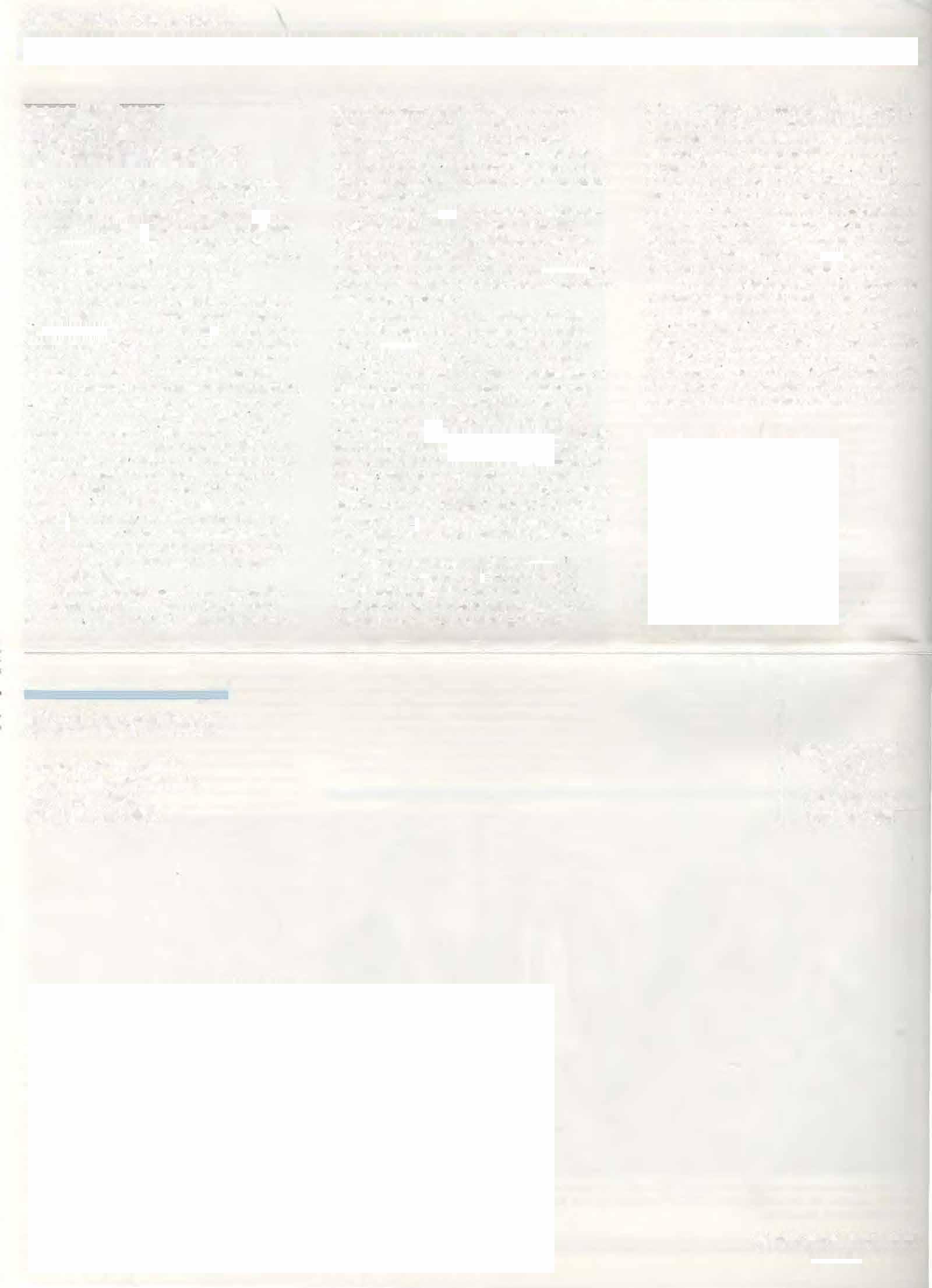
Thestudyyielded some interesting results. lk Glkkmanand fvh. Domanskifound that there i-.a ignificantly higher risk ofpan·o,iru"
Bellwether

University of Pennsylvania
School of Veterinary Medicine
3800 Spruce Street Philadelphia. PA 19104
disease incertain brL- ds. There weremorecases than expected in Dobennanpinschcrc; and Rouweilerswhencompared to other purebred do� and to mixed breed:::.. The) at fouml that the increased risk \\a� primarily confined to male Dohem1an pinschers and male Rottwctlcrs under six months ofage.
''It appean. there L"a sex-linked geneticsusceptibility to this d1sense in Rottweilcr<iand Dohcm1an pinschc�... Dr Glickman explained. ..We havesearched the literatureto'eewhether there havebeen reports ofgenetic...u...cptibilit) to otherviraldiseasesindo�.buttherearenodocumented reports ofthis."
Rcsearchen.elsewhere. worlongwith inbred 'trains ormice, round that someofthestrains weresu... ptiblc toa 'pc<:tfic\·iru-.\\hilcothen. \.\CrehighI) resi!-.UJnt Th�e micec-.ln he bred ...erccttvely and the trmt foretthersusccptibilit� or rc-.istance passed on 10 offspring. In laboratory experiments it waltdiscnvered that whencells froma mouse'"ith 'u�eptibilitytoJ'ipecific 'iru-;wereintccted "ith that 'iru�o. the'1n1' repheated rapid!�. \\hen a-;pectfic \nusagamst which theanimal had '>hO\\n resistance \\ 11\lroduced into cell from that mnu..e. the 'iru'l replicated ..tov.lv. It wasconcludt:d that the abilitY to resista specific viru� isgenctic-JIIydetermined · and that the::gl.!neforra."t�mccor su�ceptinilit\npcrat�at thecellular le'cl to limtt \iral multiplication and transmtsston.
Funher studtcsare needed w dct mme ''hctherthis i5al-.o thecaeforthet\o.odog breed'> and susceptitlility to pano\iru-. "It isa ...mall portionofthe t\\O breed population' that ha'e th1c; increased ,u,ccptibilit\..".,aid Dr
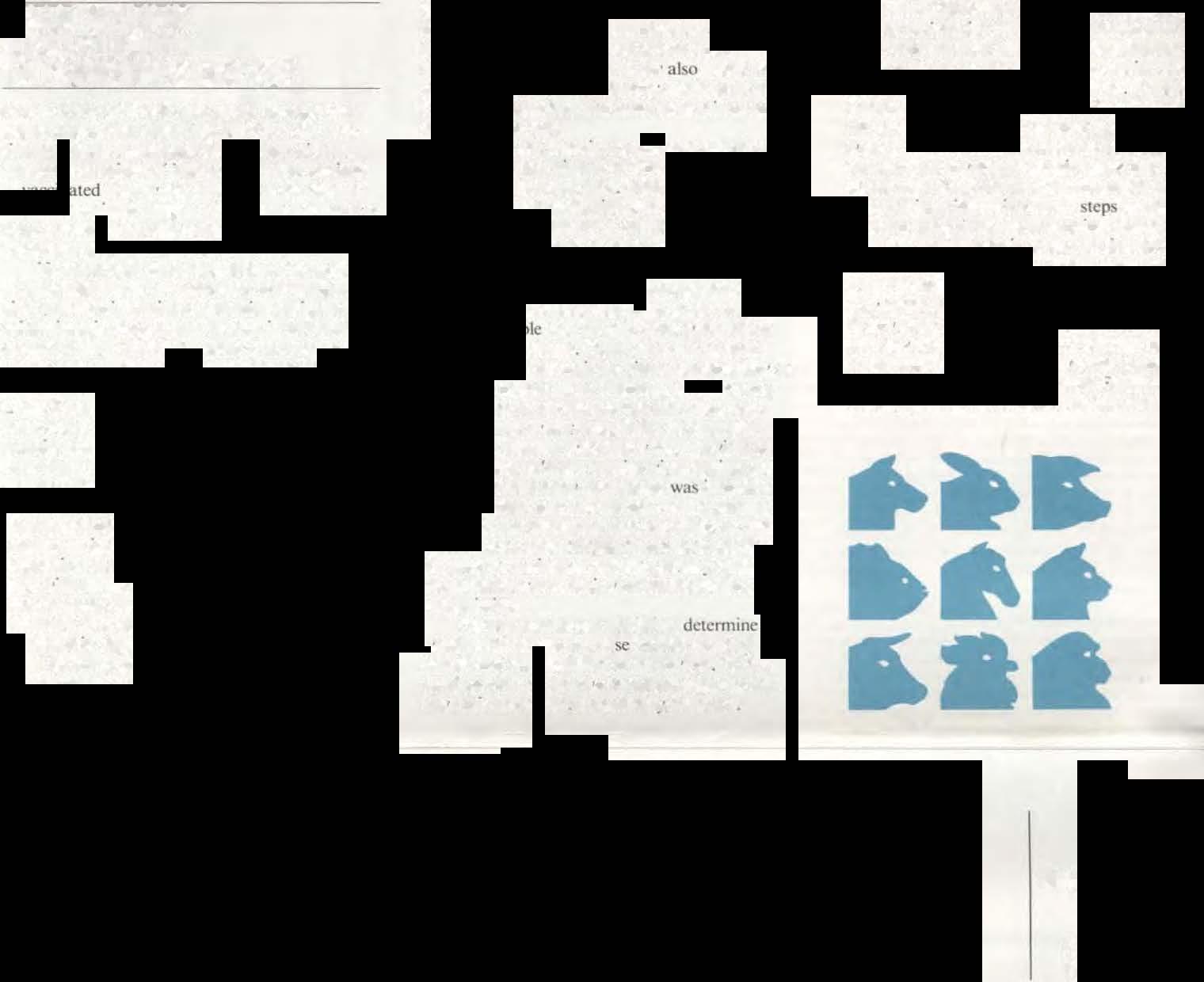
Glickman. "We...hould do pedigree anal)ses in an attempt to tdenufy the panicular bloodhn�:· On<.-e such tinesare tdcntified.a breeding programcould be'>Ct upand cellular '\tudte.., conducted...\Vewill he\.\Orkingwith Dr Donald Patterson. ofthe Section on Medical Genetics.on thi� problem." hetK'Iid. ''In ordertodetermine \\hat i�at work here.weneed the cooperation or breedersand O\\ncf'>to identtfydog..,that areat higherrisk.Oncethe lin�are identtJied and the mode ofmhentance li. known,'itcp can be taken to breed 3\'tay Irom thesuscepttblegroup.� lltecpic.lcmiologtcstudy was tunded bycontribulions from theGolden Slate Rottweiler Club. the \tkdallion Rouweiler Club. theQuaker Cit) Doberman Pm�cherClub. th� We�tcrn Ronv.eilerOwncf'l,theColonial Rmt\\l..'ilcrClub. the '\e\\ England Rott\\'eilcrClub. and the Oobem1an Pmschcr Club of\lonh Carohna. We also wish 10 thanJ.. Mrs. Bernard I rccmun tor her encouragementand �upport. Helma Weeks

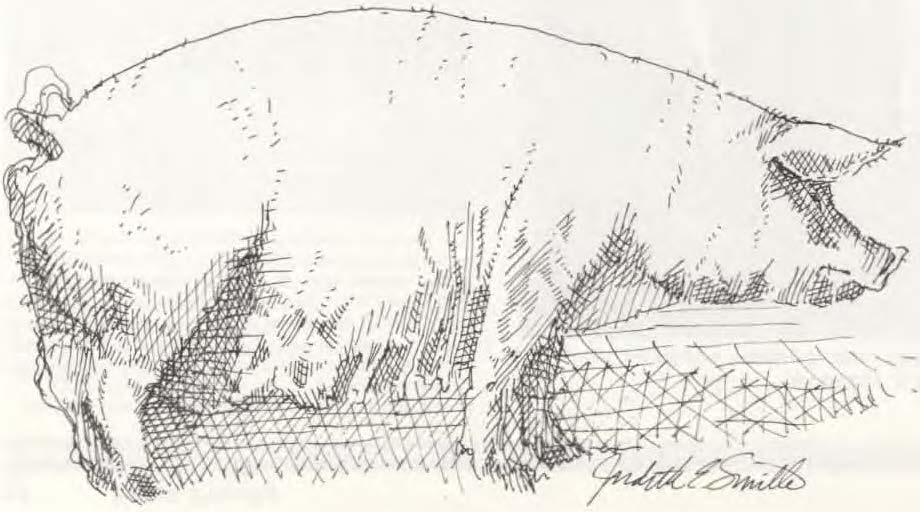
CentennialCelebration}
Nonprofit Organization US Postage PAID Philadelphia. PA Permit No 2147 Address correction requested


































